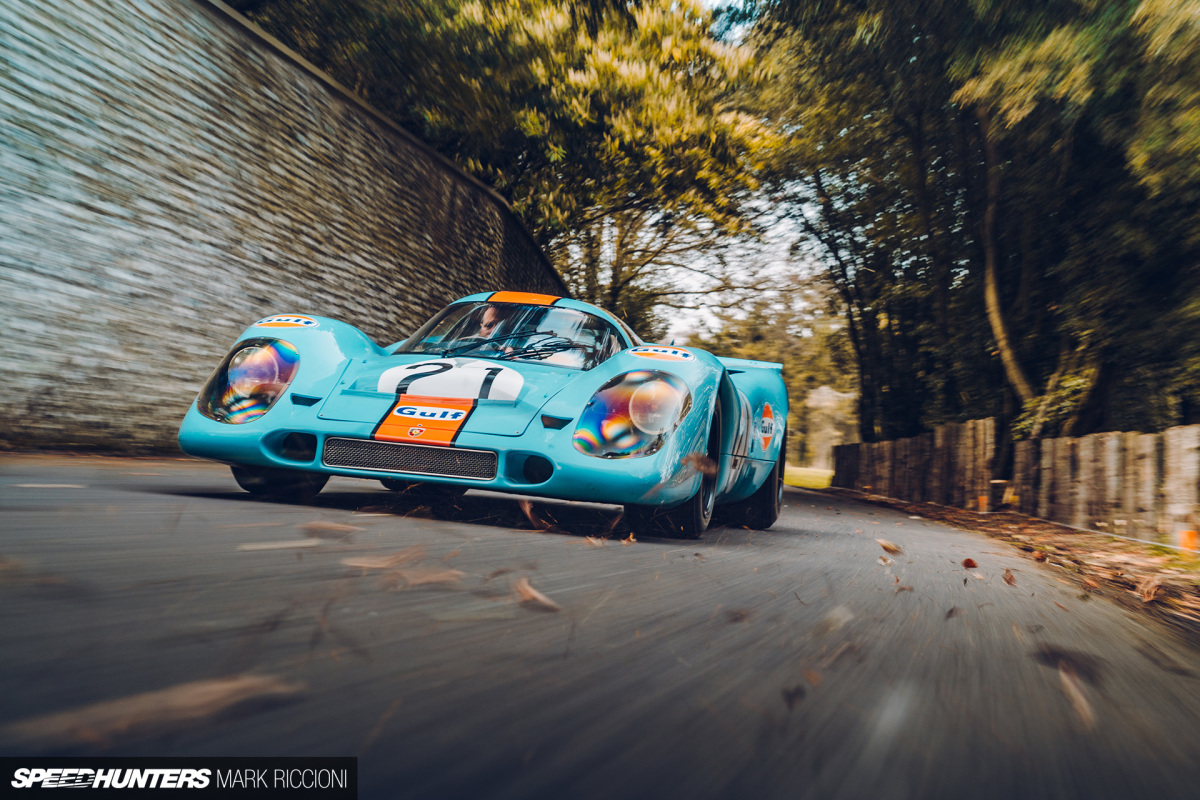
There’s more to Hans Mezger than the GT3 engine, a lot more. The engineer, engine designer and race car guru was integral to Porsche’s success as a road and sports car manufacturer for almost four decades.
Sadly, on June 10th, 2020 at the age of 90, Hans Mezger passed away. In his wake, however, is a legacy of iconic road cars and noteworthy competition machines for us to remember him by. Here are a collection of Hans Mezger’s highlights.

CHAPTER TWO
Type 547 Engine For 550 SpyderAfter studying mechanical engineering at what is now known as the University of Stuttgart, Mezger graduated to an incredible 28 job offers. None, however, were from the firm he wanted to work for, Porsche. That didn’t stop him applying to the sports car-maker, and in 1956 was quickly accepted and set to work in its diesel engine branch. It was just as much of a surprise to Mezger that Porsche had such a department in 1956, as I am sure it is to you now.

Not quite content with creating smokey industrial engines, Mezger made it clear to his bosses he wanted to work on something a little tastier. He was listened to and moved to the calculations department, a much more interesting part of the company than it might sound.
It was here where he started work on race engines, the first being the Type 547, an air-cooled flat-four four-cam, destined for the 550 Spyder race car. Specifically, he developed a formula for calculating cam profiles.
Type 753 Engine & 804 Formula 1 car

In 1962, aged 30, Mezger ditched his NSU Lambretta for a car. A Porsche 356, naturally. That same year, Porsche entered Formula 1 with the 804, as powered by a 1.5-litre air-cooled flat-eight called the Type 753. Not only was Mezger involved in the development of the engine, learning valuable information about combustion chamber design, but he also helped engineer the race car’s chassis too.
CHAPTER THREE
Type 901 EngineIt was in the early ’60s that Mezger created his most influential engine, the air-cooled flat-six for the Porsche 901/911. His engine featured an aluminium crankcase split vertically along crankshaft axis and held together by through bolts. Six individual cylinders with finned sides made from cast aluminium were squeezed between the crankcase and six separate two-valve cylinder heads. Then, on both sides, one-piece three-bearing camshaft boxes, with rockers to actuate the valves, were bolted to the heads.

The 911 was launched with a 2.0-litre version of Mezger’s creation, but the engine had been designed with enough wiggle room to be expanded to 2.7-litres. What no one expected was how far it would eventually be pushed, not just as a road car but for competition use too. Professor Ferry Porsche, the designer of the 911, commented that if he’d known the engine could have been stretched beyond 2.7-litres (eventually to 3.8-litres) he’d have “decided that it was unnecessarily large and heavy, and would have asked the designers to scale it down.” But also said he was relieved he didn’t intervene, as are we.

Referring to Mezger’s flat-six purely as the 911’s engine is almost unfair. Yes, it powered every air-cooled 911 road and race car, but you’ll also find evolutions of it in competition cars like the rear-engined turbocharged 935, the mid-engined Le Mans-winning 936, 956 and 962, as well as the road, race and rally versions of the 959. Mezger’s engine has not only proved to be strong and reliable, but it’s also extremely competitive and eminently adaptable, proof that its original design is a masterpiece of engineering.
CHAPTER FOUR
909 BergspyderMezger believed wholeheartedly in Porsche’s philosophy that motorsport improved the brand, and that competition technology filtered down to make successful road cars. It was appropriate, then, when Porsche’s then chief of development, Ferdinand Piëch, gave Mezger the head of race car design job.
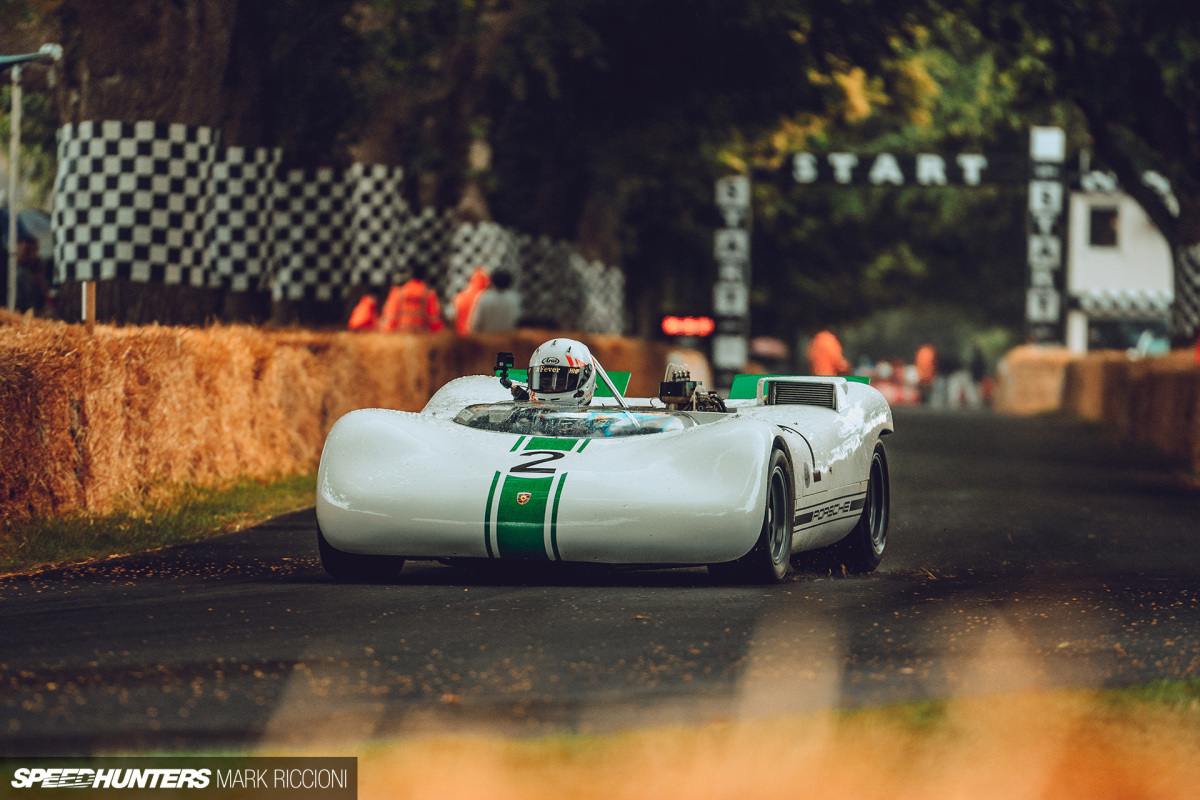
In this role, Mezger oversaw the creation of the beautiful 906/Carrera 6 with its twin-plug evolution of his 911 engine, as well as the 910, 907 and 908, all equipped with versions of the Type 771, itself an evolution of the man’s earlier Formula 1 engine.
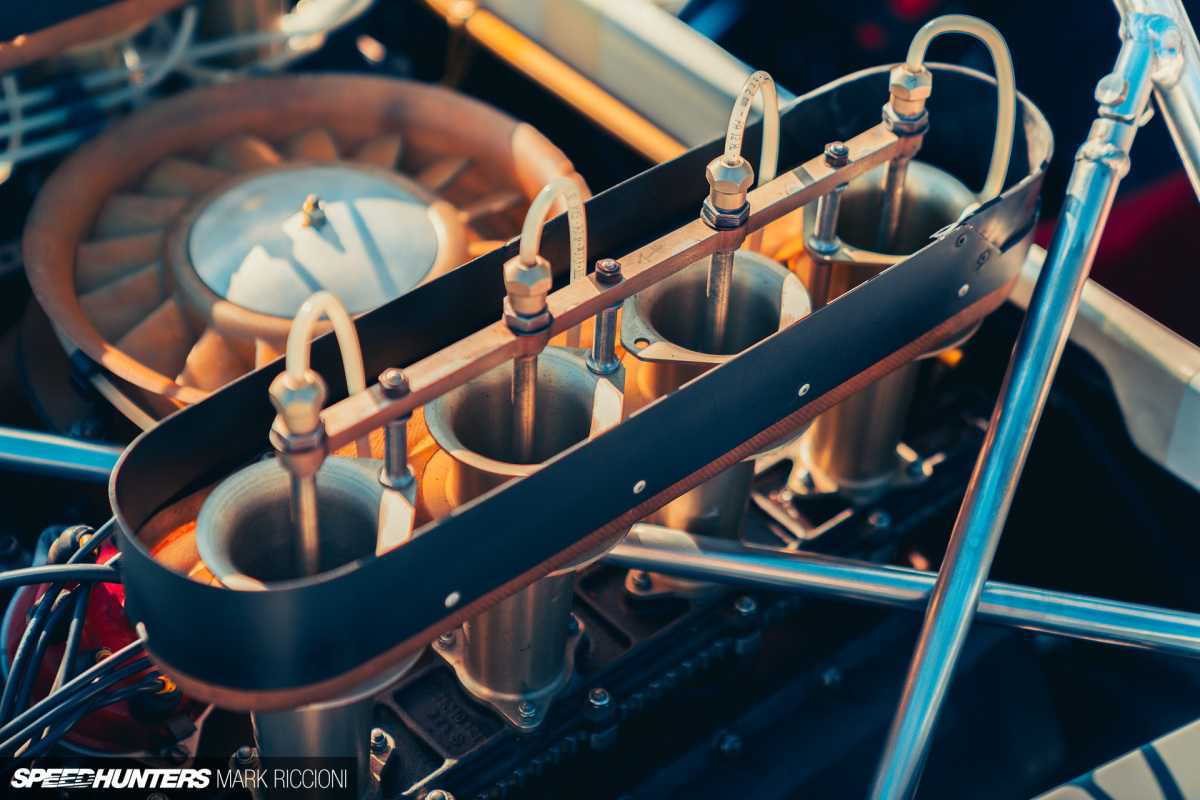
The wildest car of this era was the 909 Bergspyder. The hill climb car was commissioned by Piëch to be incredibly light and ordered the use of many exotic materials to trim its weight down. Legend has it, Piëch inspected each part of the car with a magnet to see if any steel had been used. If the magnet stuck, the engineers were sent off to remake the part from a lighter material.
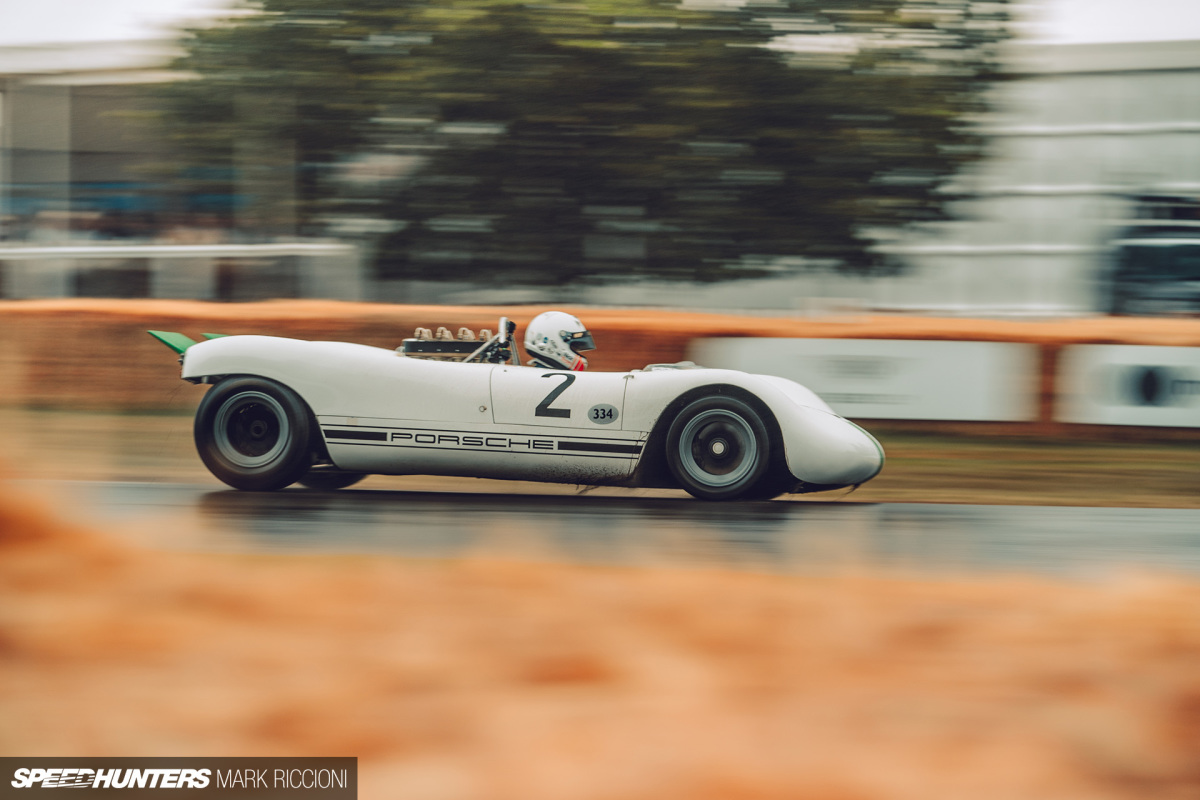
Mezger’s team used a variety of non-ferrous materials in the Bergspyder, including an aluminium chassis, fibreglass bodywork, titanium suspension arms, balsa wood resistors, a wiring loom made from silver and, controversially beryllium brake discs. Although beryllium is light, strong and has thermal properties ideal for brake discs, the dust is classed as a Group 1 carcinogen.
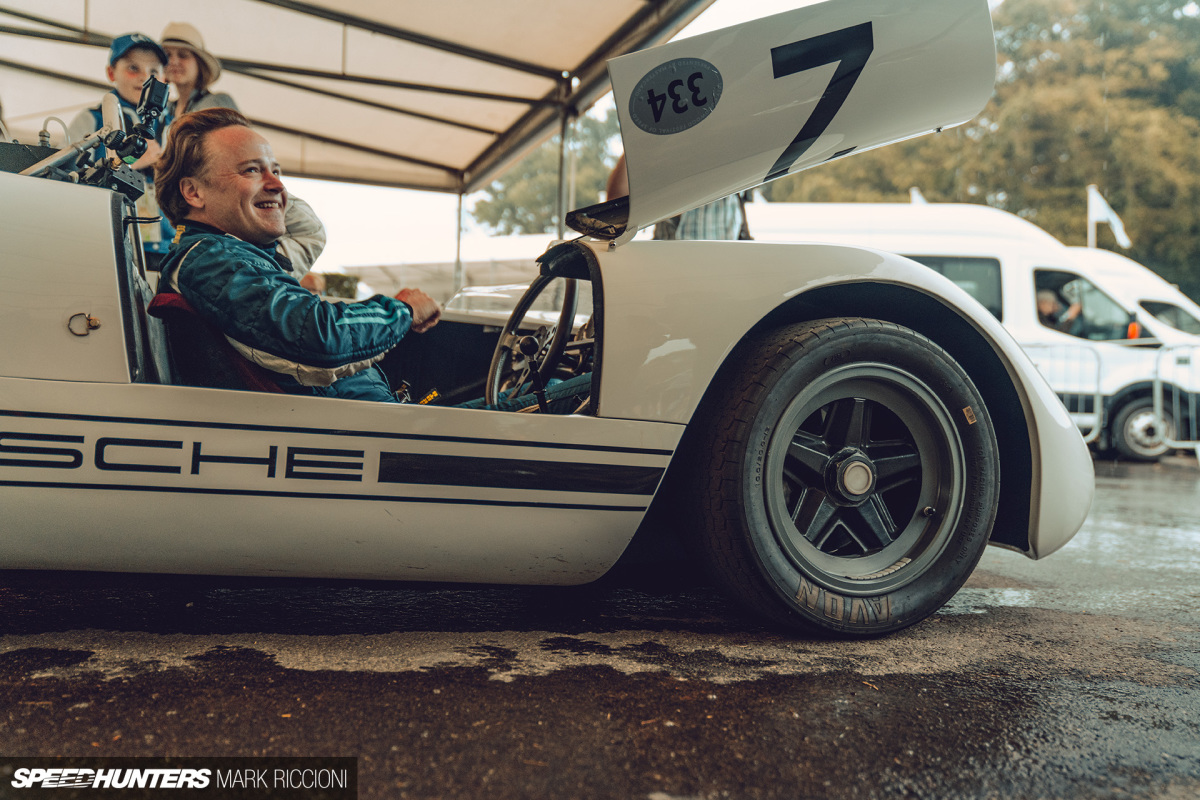
It wasn’t just the material choices that were innovative, ideas to save weight were all over the car, including a lack of a fuel pump. Instead, a pressurised titanium fuel tank squeezed a rubber bag to deliver fuel to the engine. Even with its relatively large Type 771 flat-eight engine, the final wight of the 909 Bergspyder was just 385kg (848lb) with fuel and oil. It’s the lightest Porsche racing car there has ever been.
CHAPTER FIVE
Porsche 917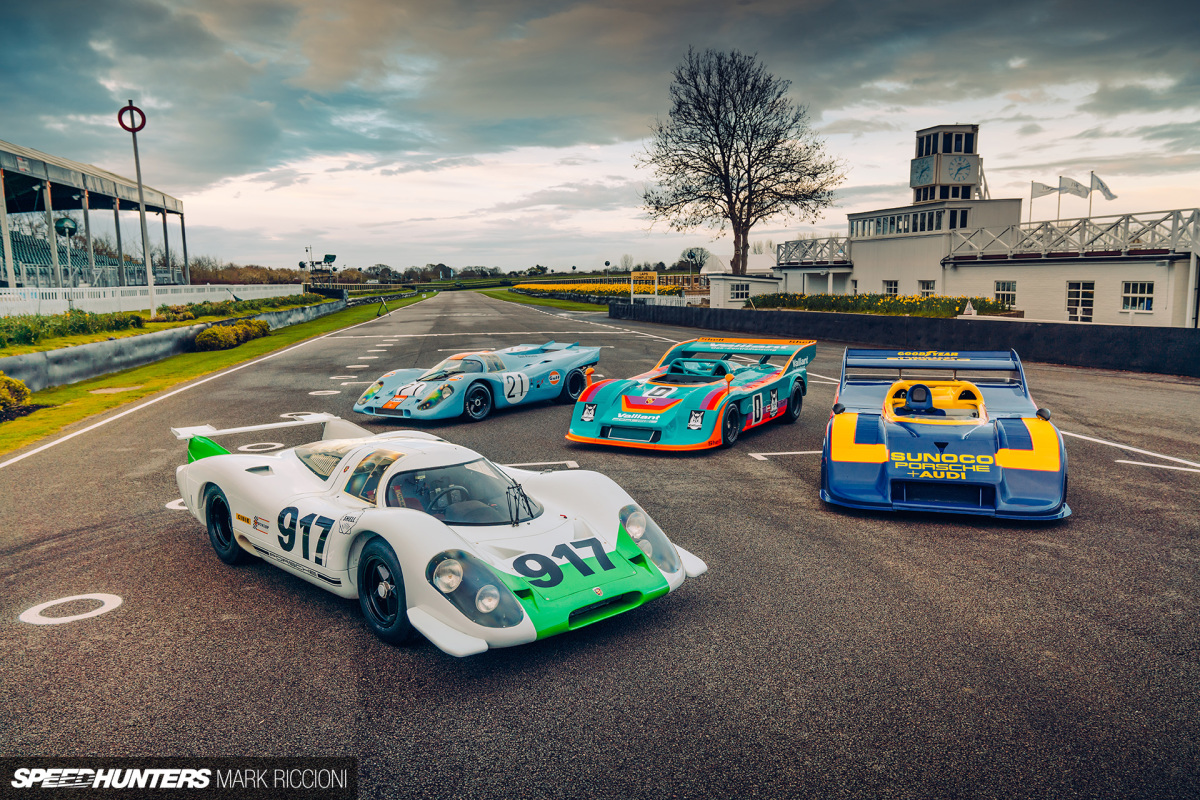
If it had been any other engine designer or engineer, Mezger’s next major project would have been career-defining and left a legacy that would be difficult to trump. But with the 911’s flat-six – with its decades of service and incalculable race wins – under his belt, designing the Porsche 917 is relegated to a second-best achievement.

Like his F1 car before, Mezger didn’t just work on the 917’s 520bhp 4.5-litre flat-twelve engine, but the entire car was his responsibility. But based solely on drivers reports of prototype and early versions of the 917, you could be fooled into thinking the project was a failure. It was tricky to drive in a straight line, skittish in corners, and so unsafe that the driver’s wives would tearfully beg their husbands not to race it.
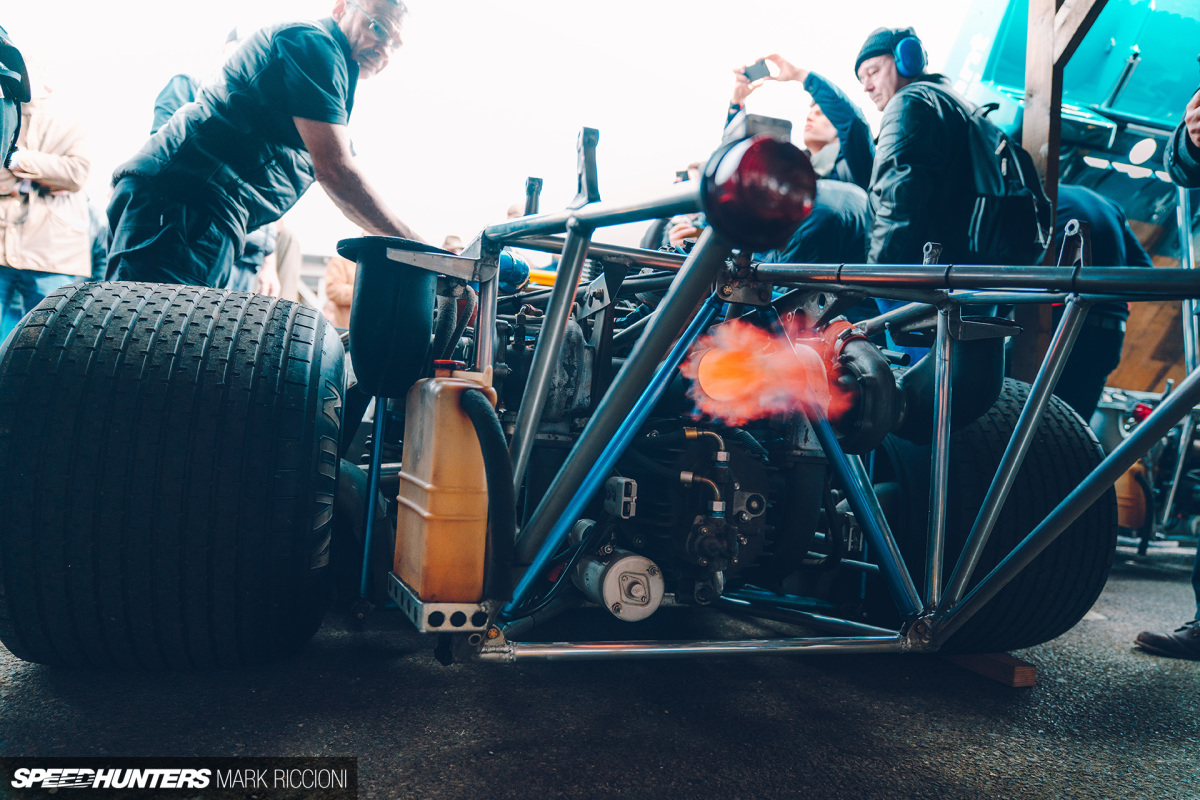
But that’s only a small part of the 917’s story, because, of course, it was an incredibly successful race car. In 1970, a short-tail 917 won Le Mans, giving Porsche its first victory at Le Sarthe and kick-starting the marque’s reign as the most successful manufacturer at the event. The car also won seven of the eight championship events it entered that year.
The 917 was just as dominant the year after too, and in 1971 it won eight of the 10 championship rounds, including Le Mans where it set an overall distance record that wasn’t bettered until 2010.
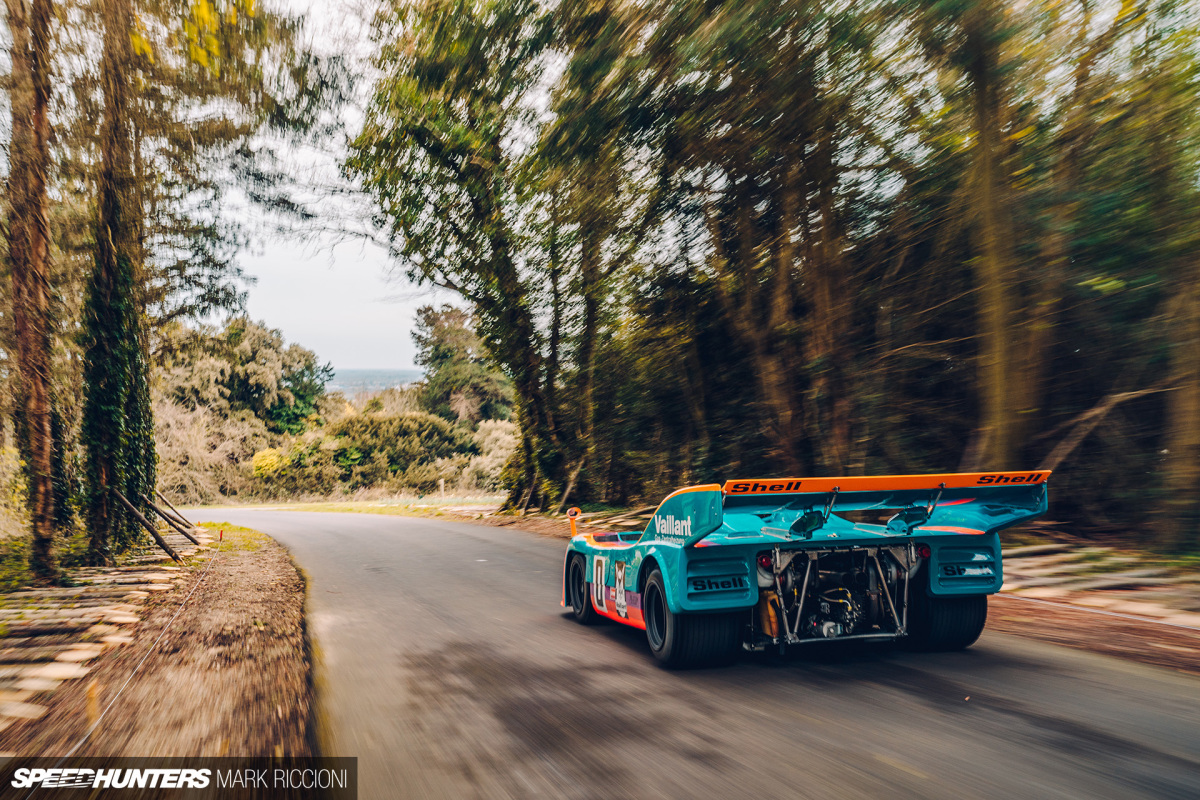
Even the FIA’s change of rules, outlawing the 5.0-litre sports cars class the 917 competed in, didn’t hamper the car’s success. Mezger, with the help of Porsche’s turbo engineer Valentin Schäffer, added forced induction to the sports car and Porsche took it across the Atlantic to compete in the Sports Car Club of America’s Canadian-American Challenge Cup (Can-Am). Even after a shaky start, including an accident by star driver Mark Donahue, the 917/10 took the overall championship.
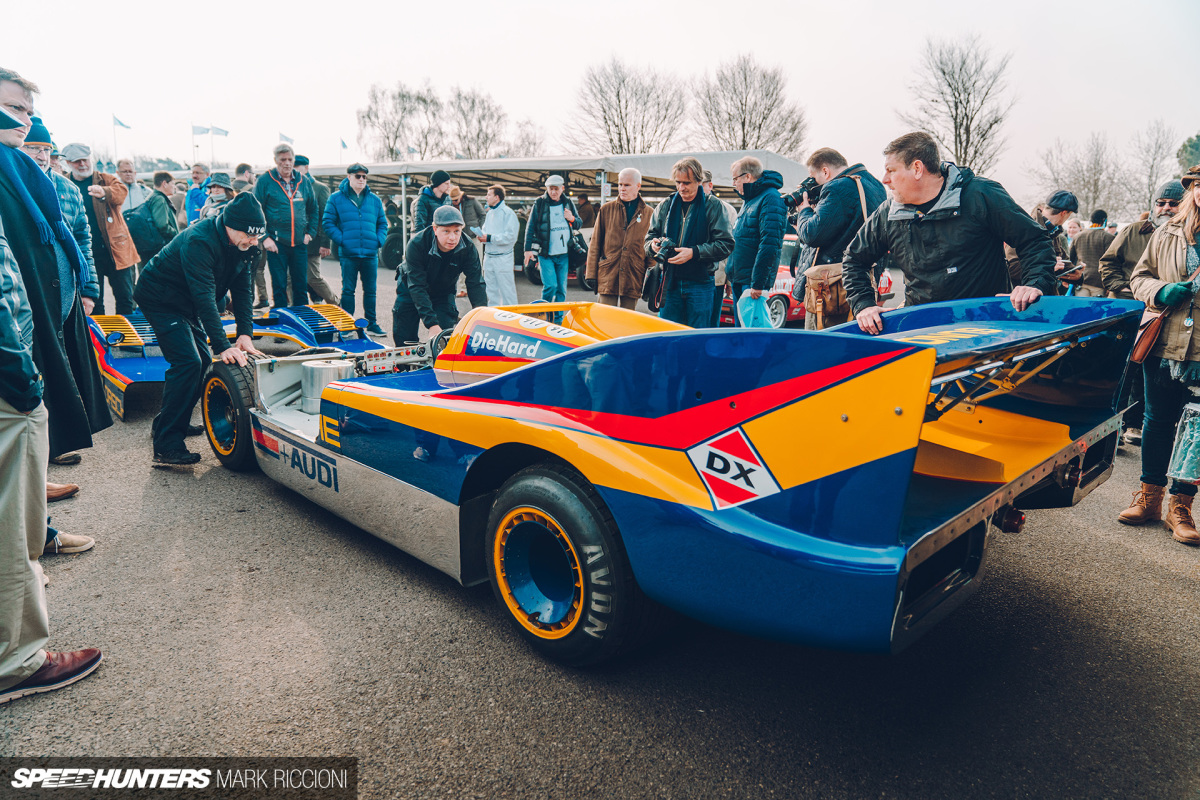
In 1973, the Can-Am 917, now the 917/30 with 1,500bhp, was even more dominant. Not only did it win the championship, but it caused the rules to be changed so the car could no longer compete. Still, some privateers found a way to race the most monstrous 917/30 and won championships and set even more records throughout the 1970s.
CHAPTER SIX
Porsche 911 Turbo & 924 Turbo RekordwagenWith the insanely powerful 917/30, with its boosted flat-twelve engine proving that turbo technology was reliable in motorsport, as well as drivable thanks to the cars’ successes, Porsche enlisted Mezger and his team to create a turbocharged road car, and in October 1974 the 911 Turbo (930) was unveiled.

After just a few years, and with a greater understanding of forced induction engines, Porsche tooled-up to turbo charge its cheapest, entry-level model the 924. To prove the new coupe’s capabilities, Porsche wanted to beat Mercedes-Benz’s average speed record of 156mph (251km/h) over 60 hours set by the experimental diesel C-111-IID.
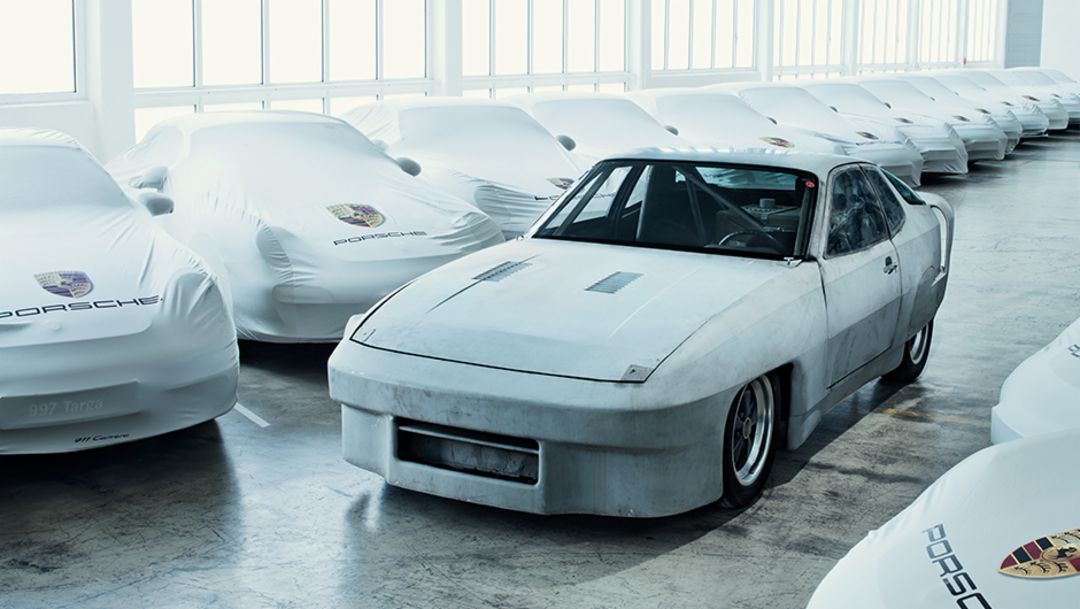
Porsche gave the task of turning the 924 Turbo into a record-breaker to its competition engineers. While one part of the motorsport department smoothed out the seams, covered the wheels and added extra bodywork and a long tail to improve its drag coefficient, Mezger, along with turbo expert Schäffer, went to work on the engine.
By installing the biggest KKK turbocharger they could get their hands on, and fitting it as close to the intake as possible, the two engineers eeked 260bhp from the 1,984cc four-cylinder motor.
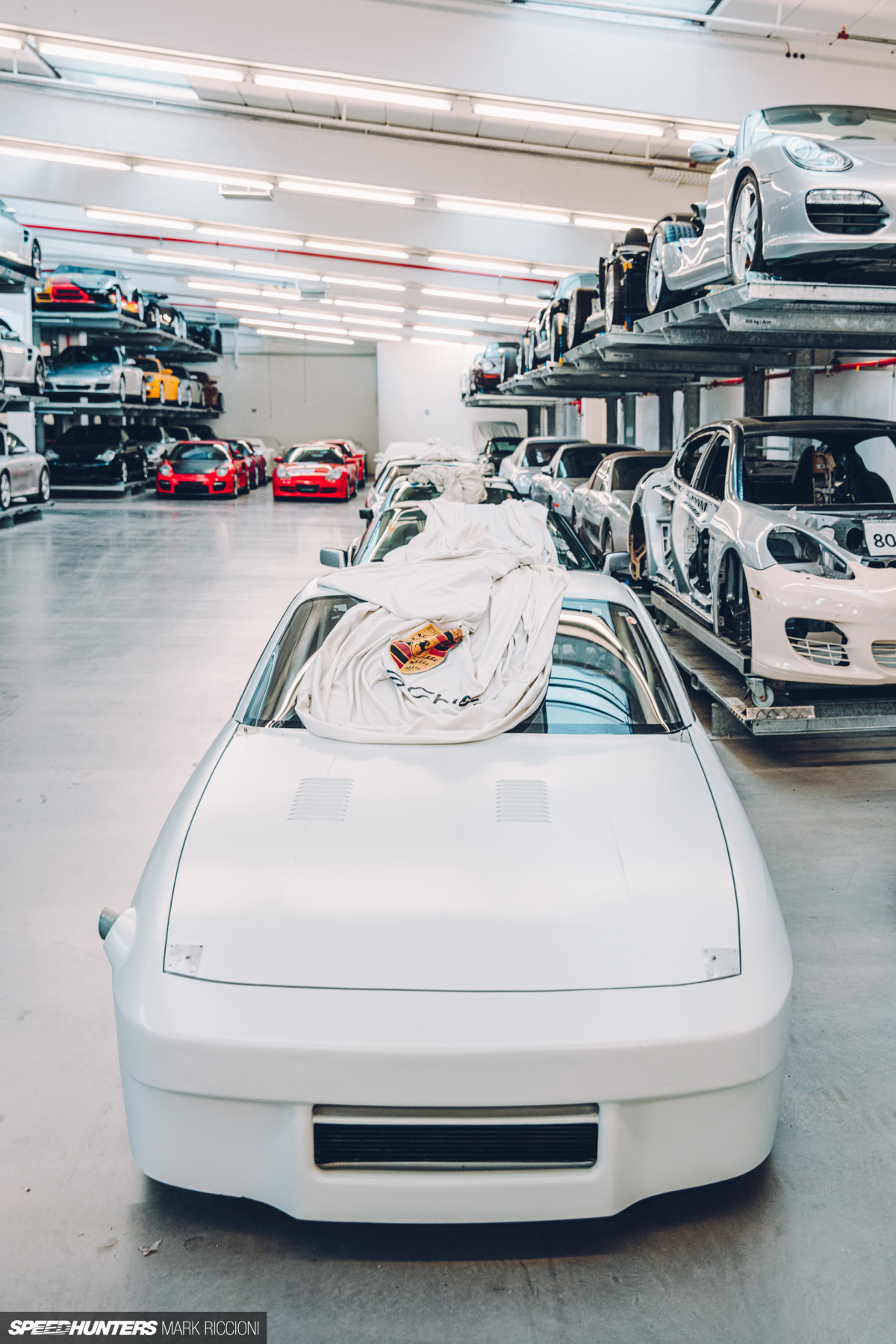
The 924 Turbo Rekordwagen project was storming along but just wasn’t finished soon enough. While the Porsche was in development, Mercedes attempted the record again with an even more aerodynamic machine. One that established nine new records and had a top speed of over 200mph (322km/h). As a result, Porsche ended the Rekordwagen project and Mezger diverted his attention elsewhere
CHAPTER SEVEN
TAG Turbo V6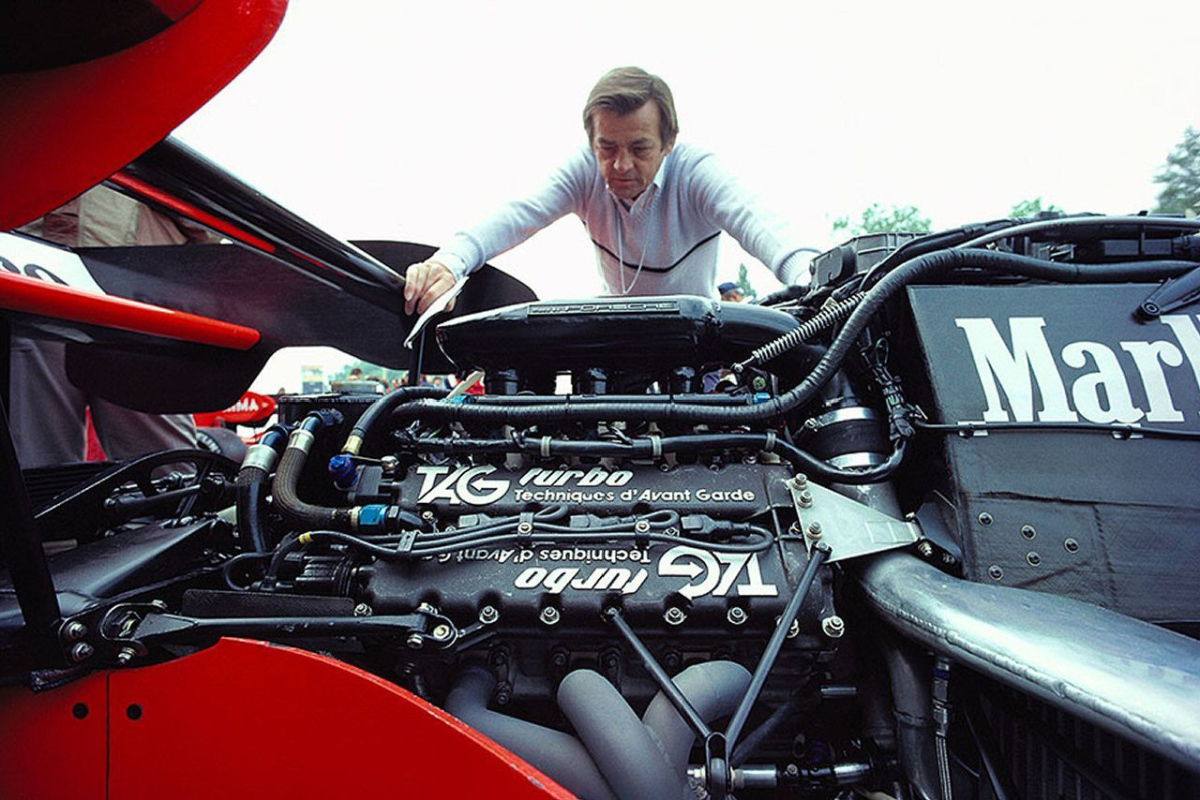
Mezger was a fan of turbocharged engines and was skilled in designing and creating them, clearly. So, when in 1981 McLaren approached Porsche to create a new engine for its F1 programme, it was Mezger who was given the task of engineering it. The result was a turbocharged 1.5-litre (to conform to the then size restrictions of forced induction engines in F1) 80-degree V6 called the TAG Turbo. Despite its small size, the engine could produce more than 1,000bhp and helped McLaren win 25 races, the 1984 and 1985 constructors titles, and earned Niki Lauder one of his championship titles and assisted Alain Prost in achieving two of his, too.
FINAL CHAPTER
M96/76, M96/70 and M96/70S ‘The Mezger’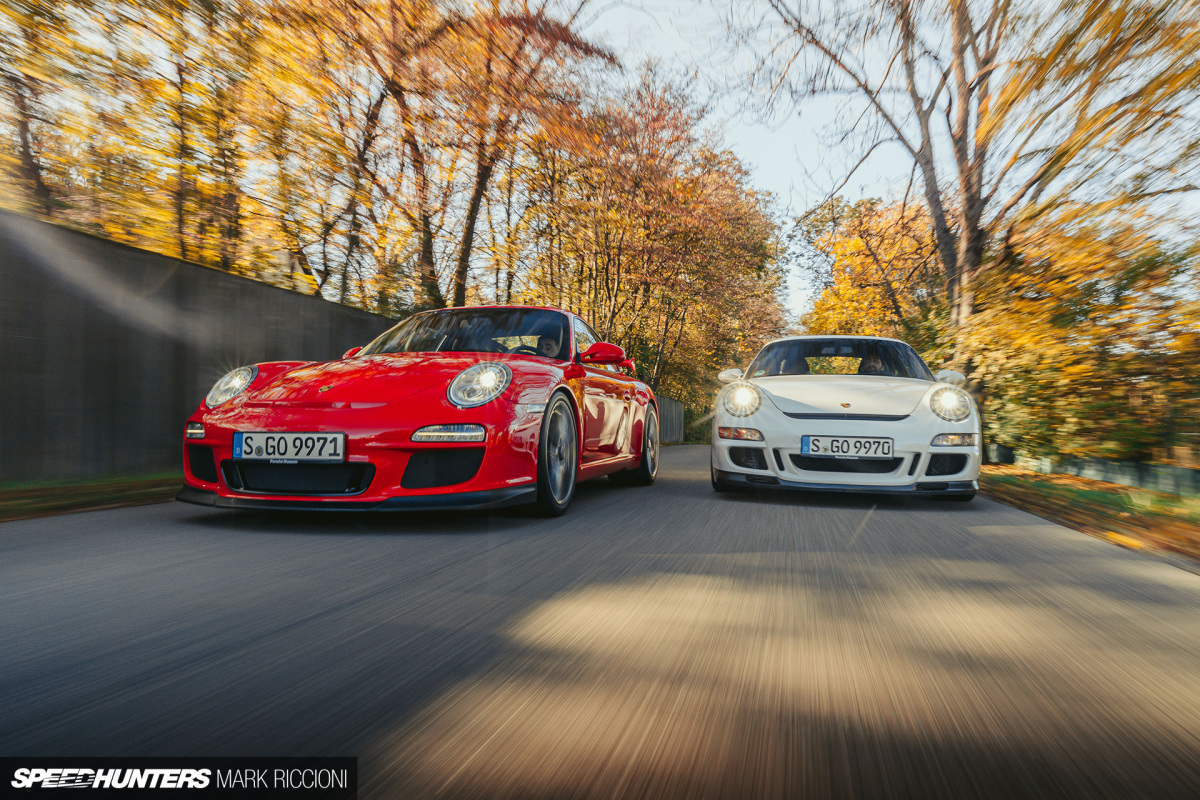
Its nickname is a little misleading, as ‘The Mezger’ isn’t entirely one of Hans Mezger’s own engines. However, it features so many of the man’s engineering hallmarks that no one would doubt it was a fitting tribute.
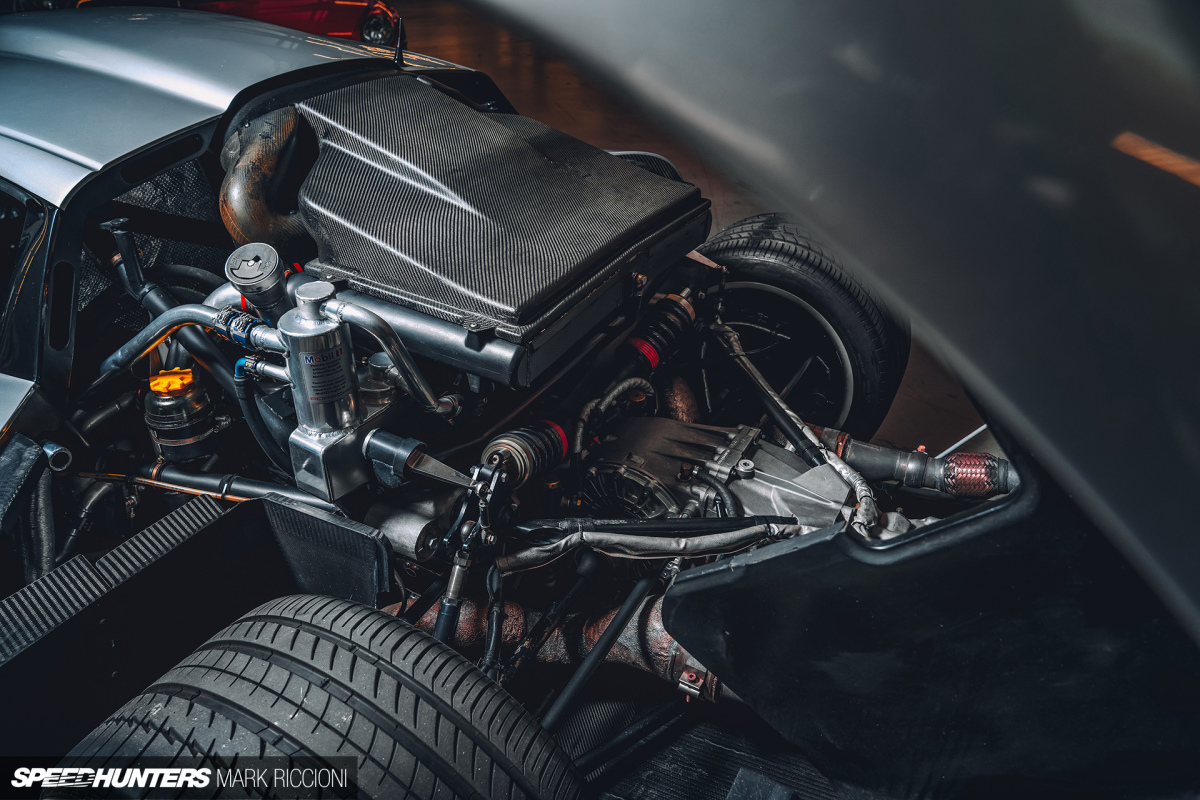
Mezger retired form Porsche in 1993, after exclusively working for the company for 37 years, but his engines were still an integral part of Porsche’s DNA. Then, when Porsche decided to enter the 1996 GT1 regulations, a departure from the Zuffenhausen status quo was taken; the new top-tier race car would be water-cooled. Despite this fundamental change in philosophy for the flat-six, the 3.2-litre turbocharged motor created for mid-engined 911 GT1 would still be familiar to any scholar of Mezger’s work.
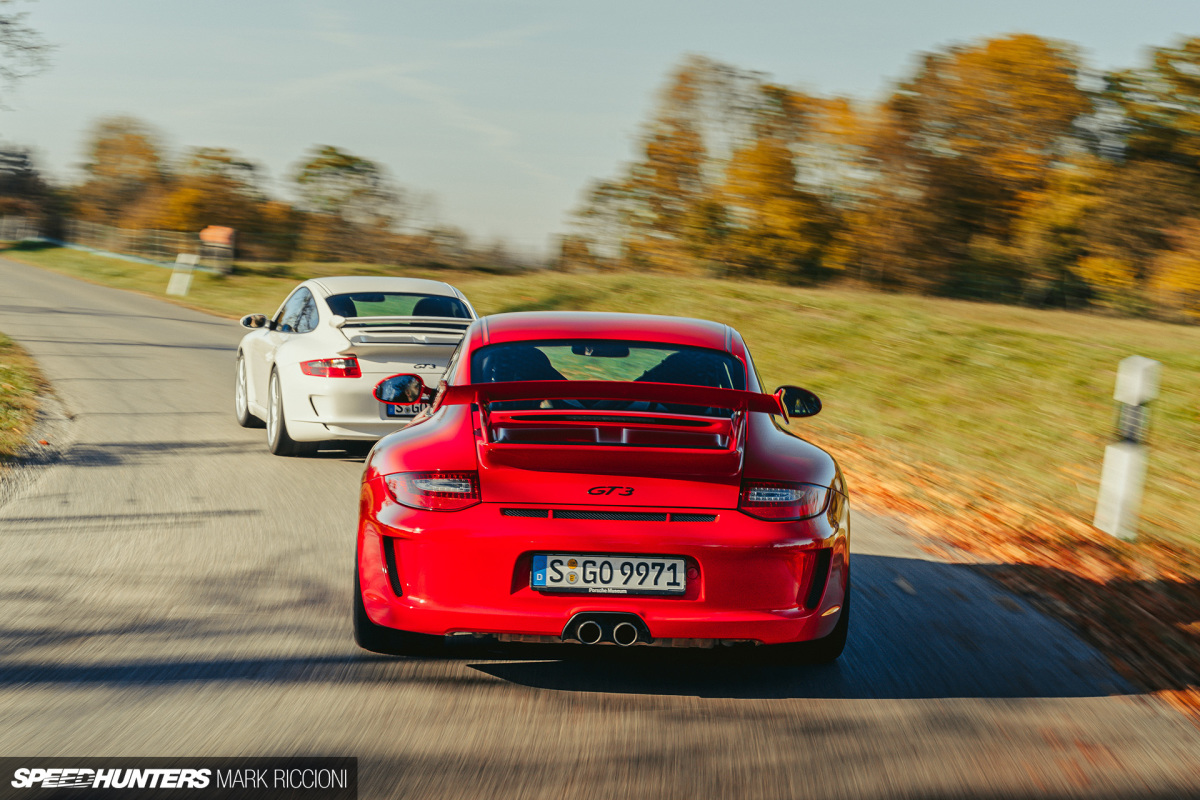
The cylinders, now in pairs of three, with wet liners for the water cooling, were topped with single-piece water-cooled four-valve-per-cylinder twin-cam heads, very similar to those on Mezger’s 959 engine. It also featured the exact same bore and stroke as the engineer’s 962’s flat-six. And, most notably, at its centre was a separate vertically split aluminium crankcase, just like Mezger’s original 911 engine.

As many parts of the GT1’s motor were evolutions of well-developed and race-proven technologies, Porsche decided it was the perfect basis for range engines destined for its high performance and homologation 911s. They included the GT3, GT2 and Turbo versions of the new water-cooled 996 911.
The bore and stroke of the GT1’s engine were increased to allow capacity to grow to 3,600cc, and variable camshaft timing was added to the intake cam. While the forced induction motor for the Turbo (M96/70) received two turbos and the GT2’s engine (M96/70S) received even bigger ones, the GT3’s version (M96/76) got titanium connecting rods, bigger valves, and a high 11.7:1 compression ratio.

All three versions are affectionally known as The Mezger, but only the GT3’s naturally aspirated unit survived the change from 996 to 997. And after some serious development, its original 3.6-litre capacity was taken to 3.8-litres, and then finally 4.0-litres in the 2011 GT3 RS 4.0. With 500bhp, an 8,250rpm rev limit and a whole orchestra of chunters, gurgles, wails, induction howls and exhaust burbles, this final Mezger-motor is a glorious footnote to an incredible engineer’s legacy.
God speed Hans Mezger.
Will Beaumont
Instagram: will_beaumont88
Photography by Mark Riccioni
Instagram: mark_scenemedia
Twitter: markriccioni
mark@scene-media.com
Archive Photos by Porsche
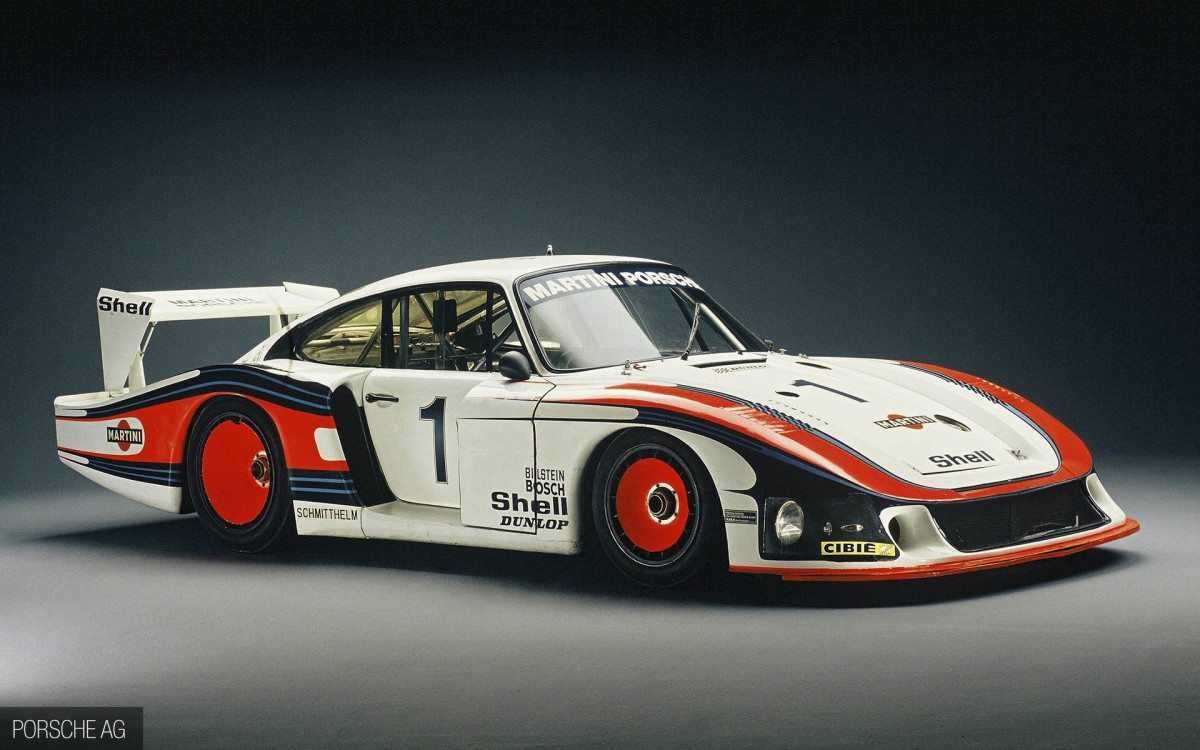
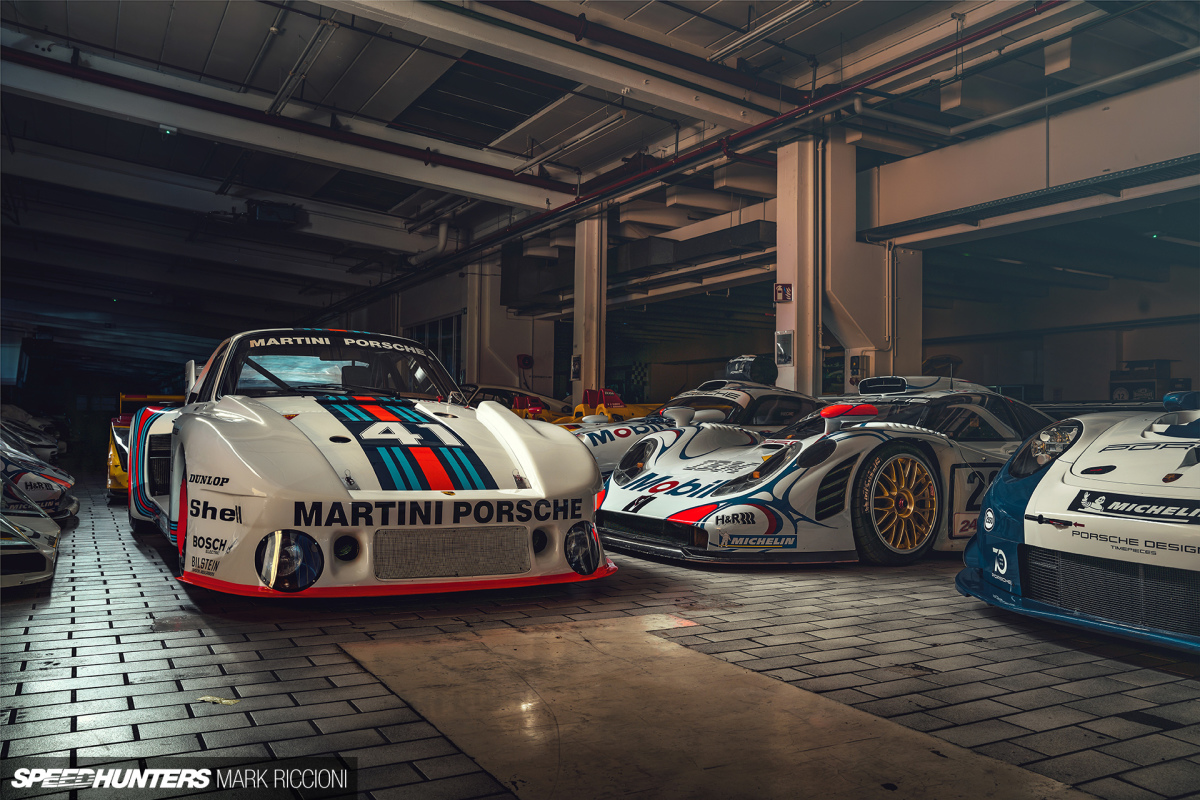
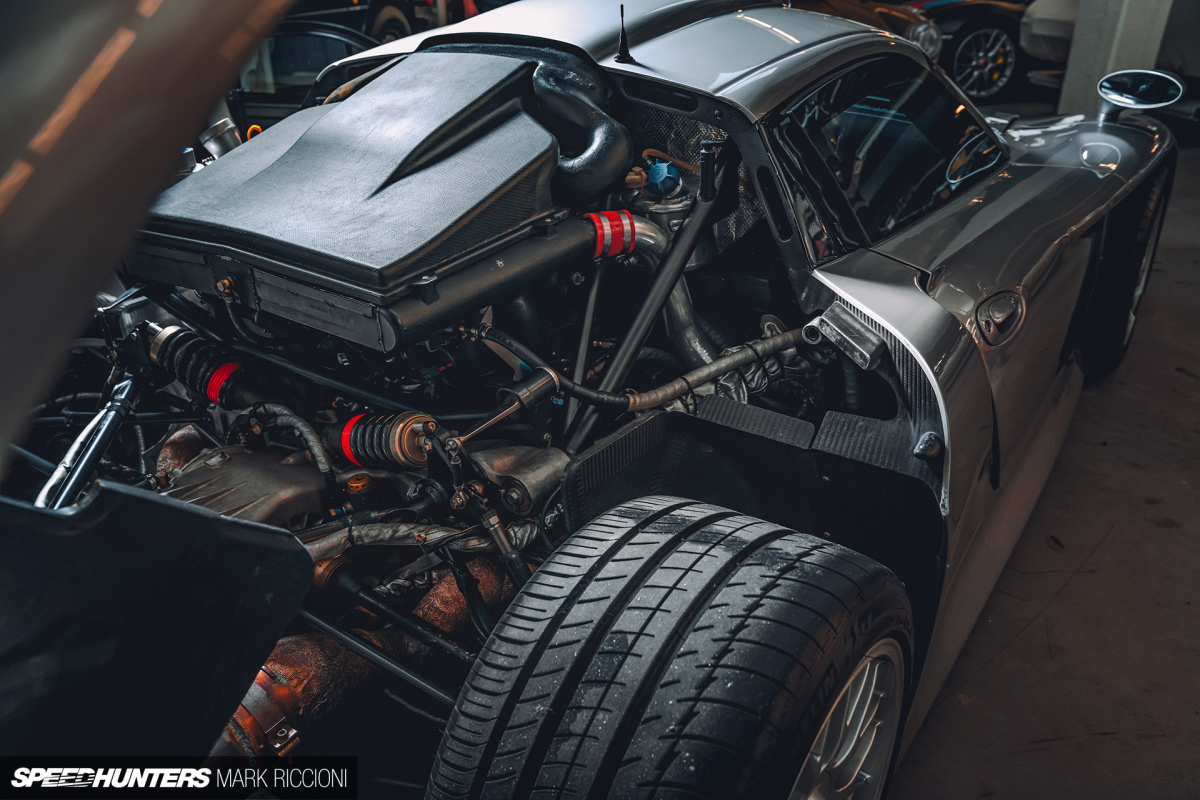
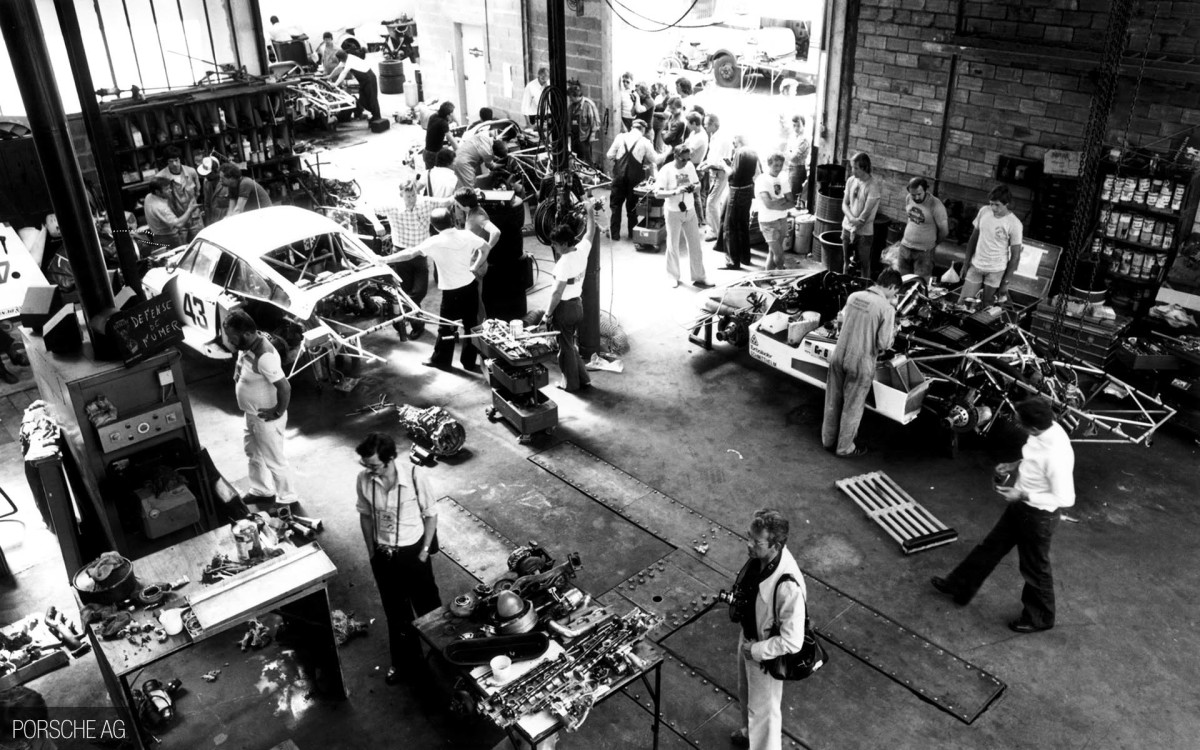
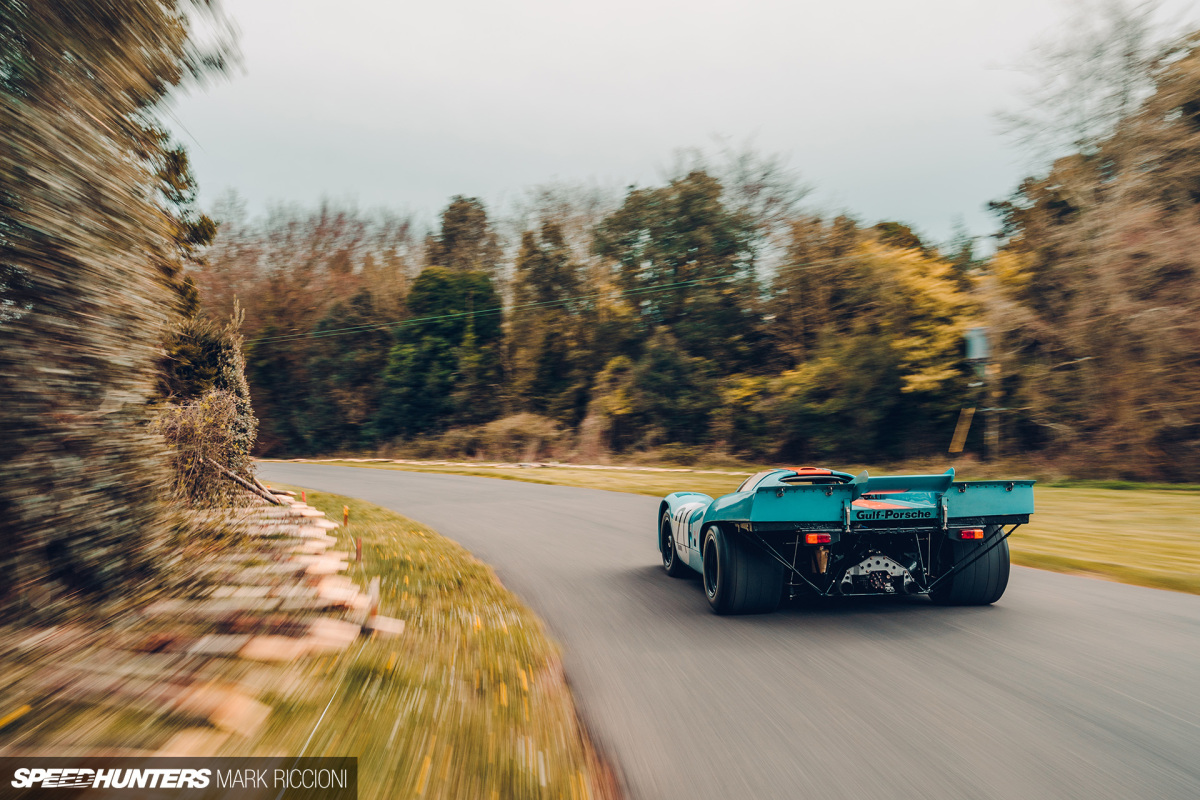
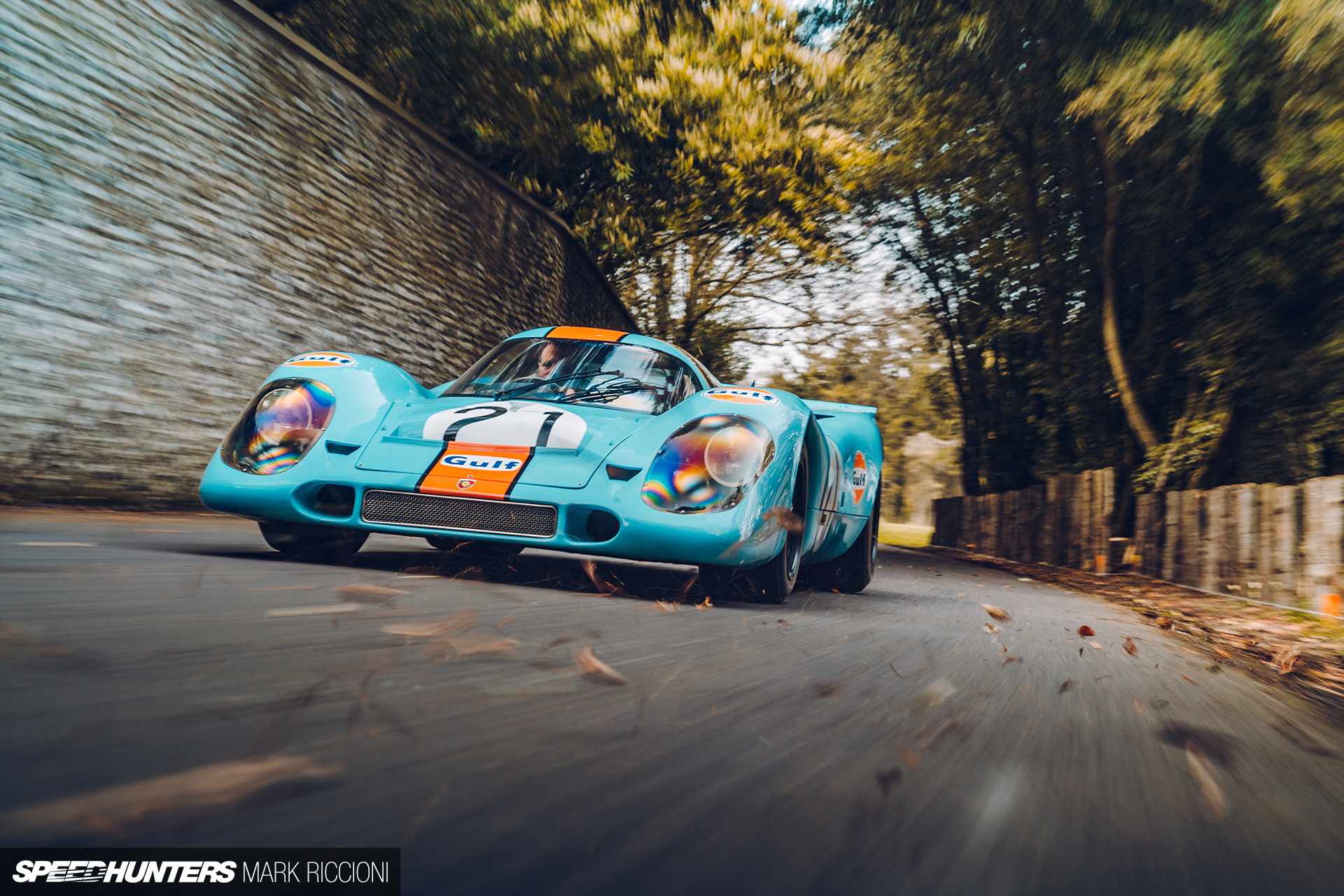































































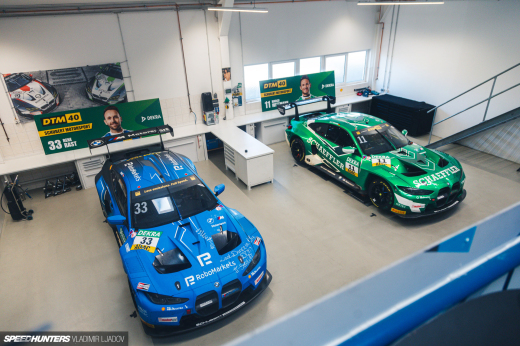



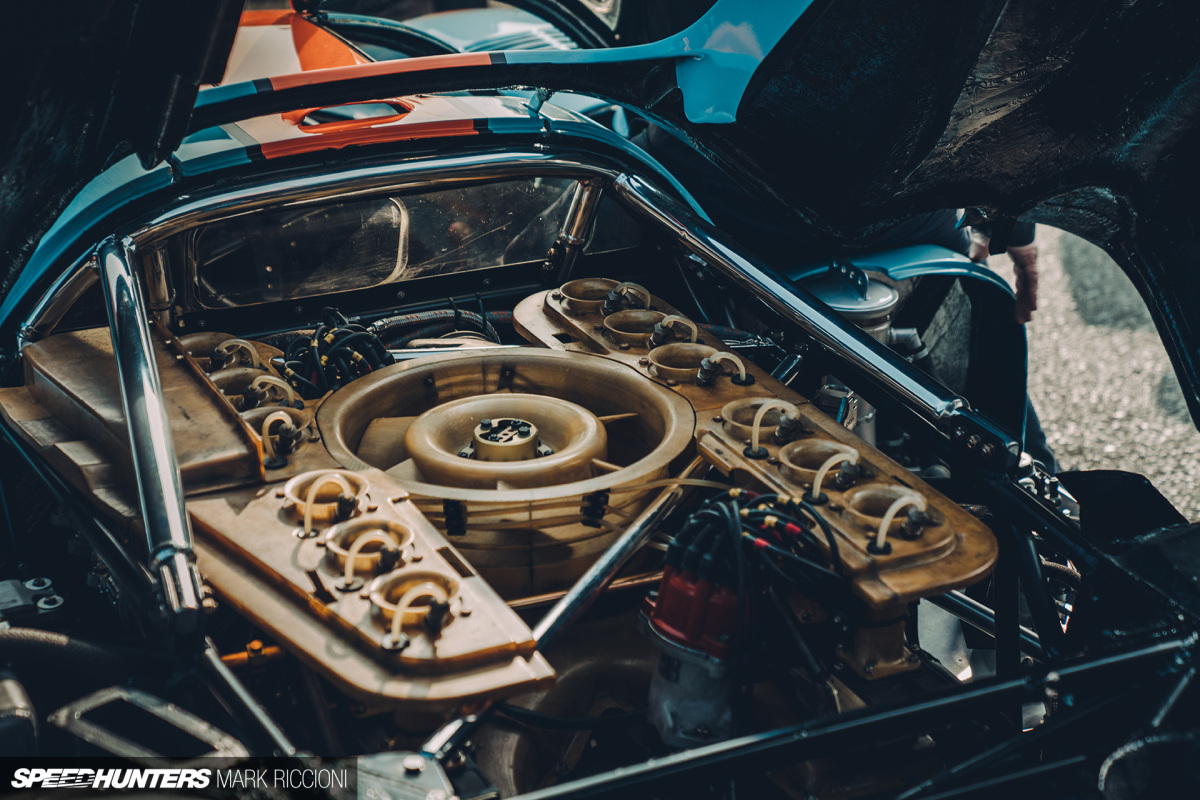
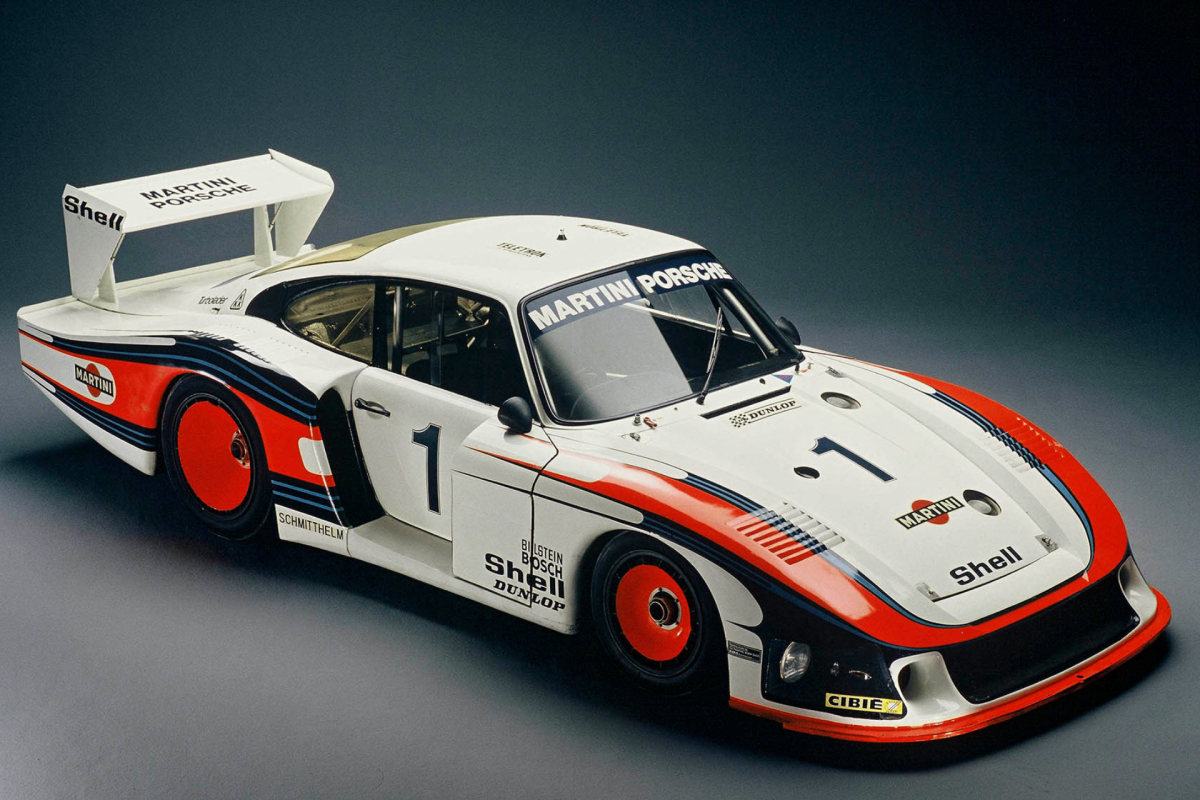





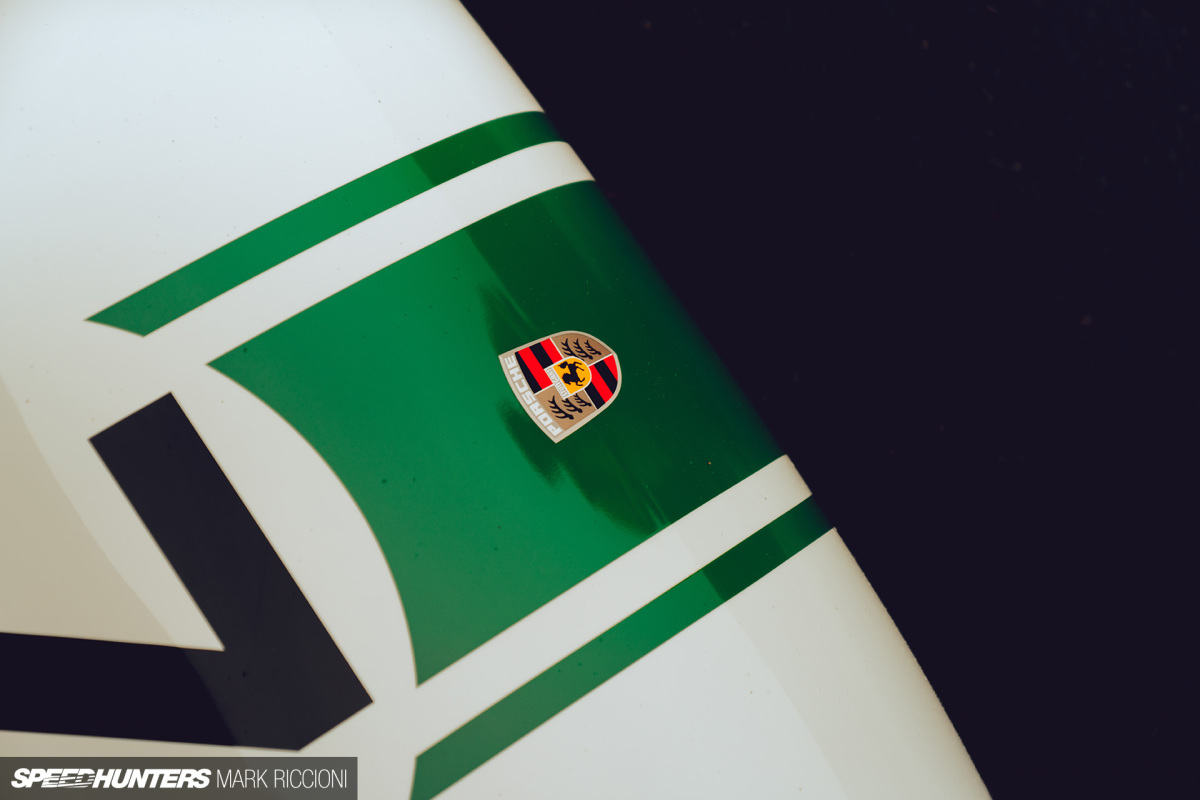
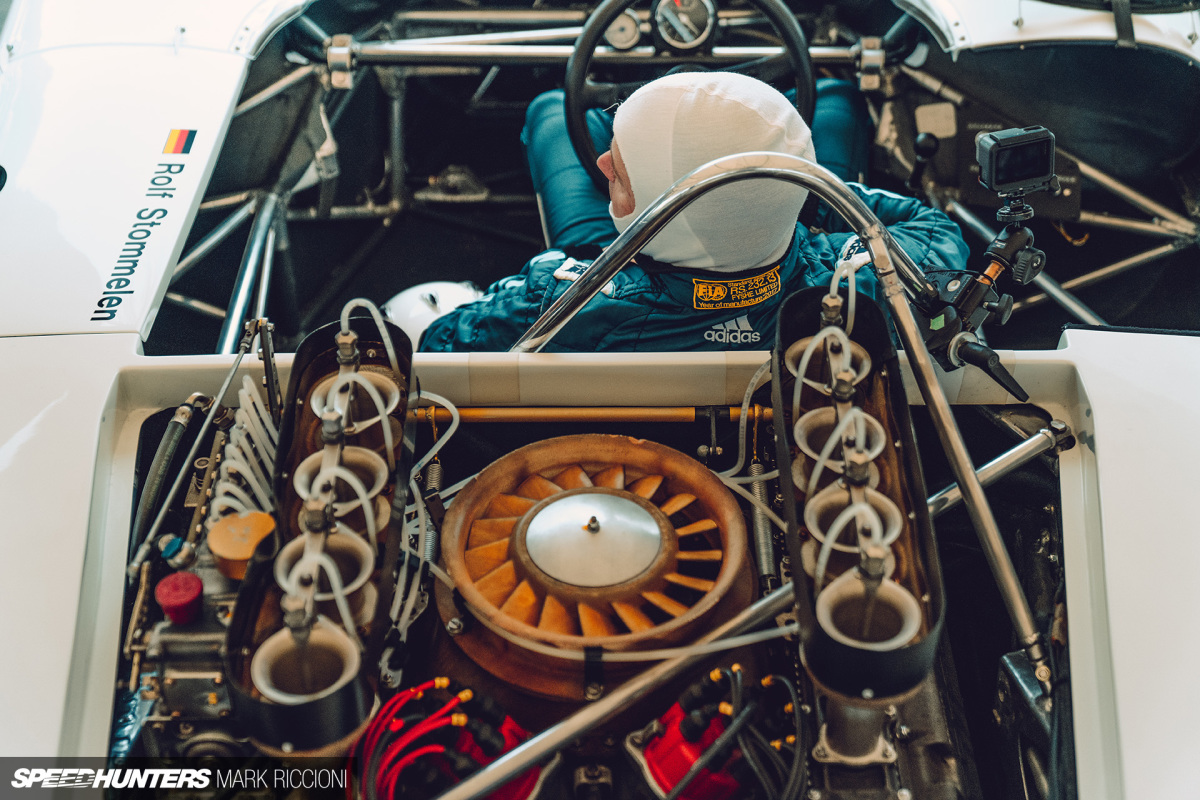

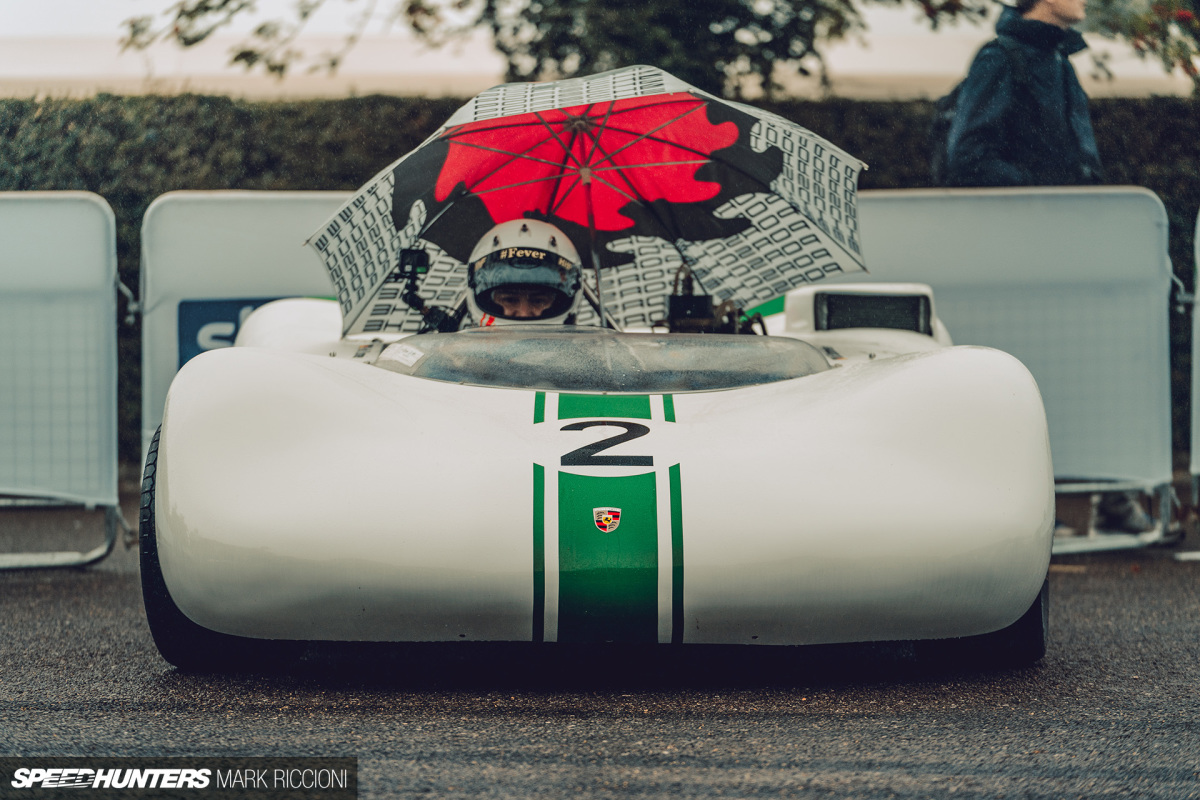
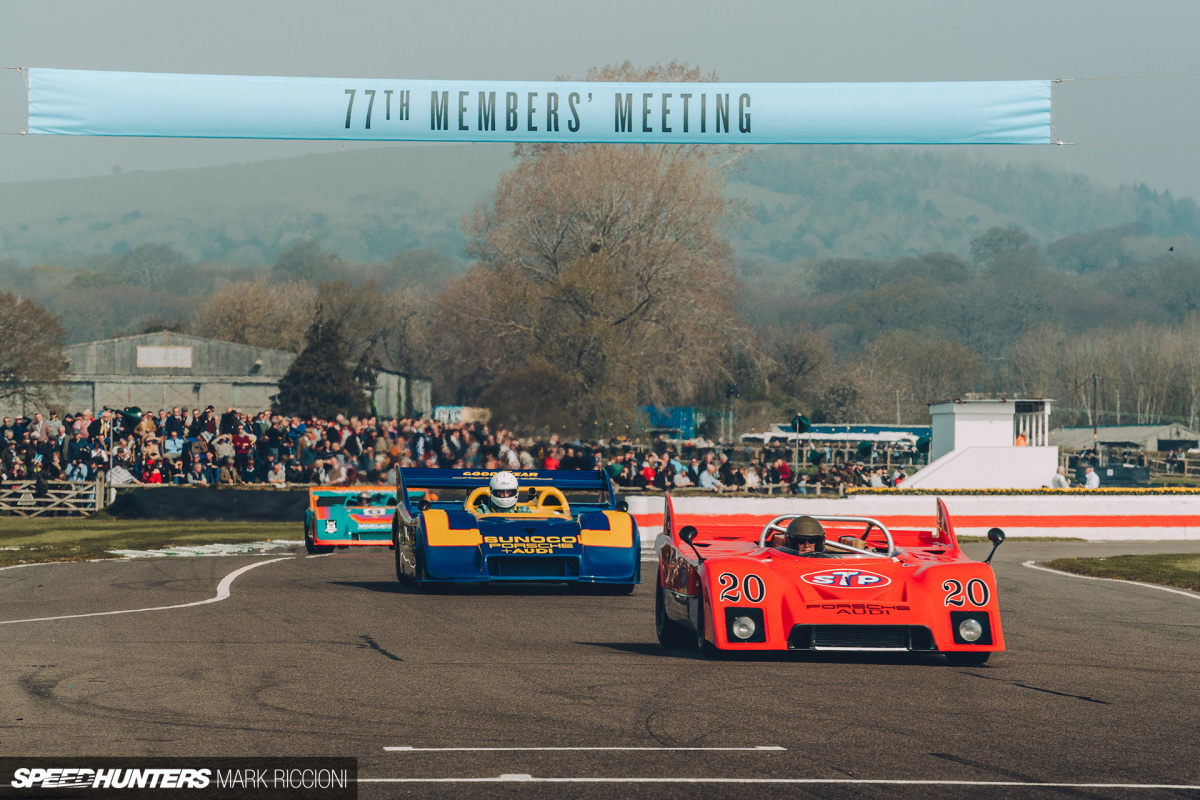
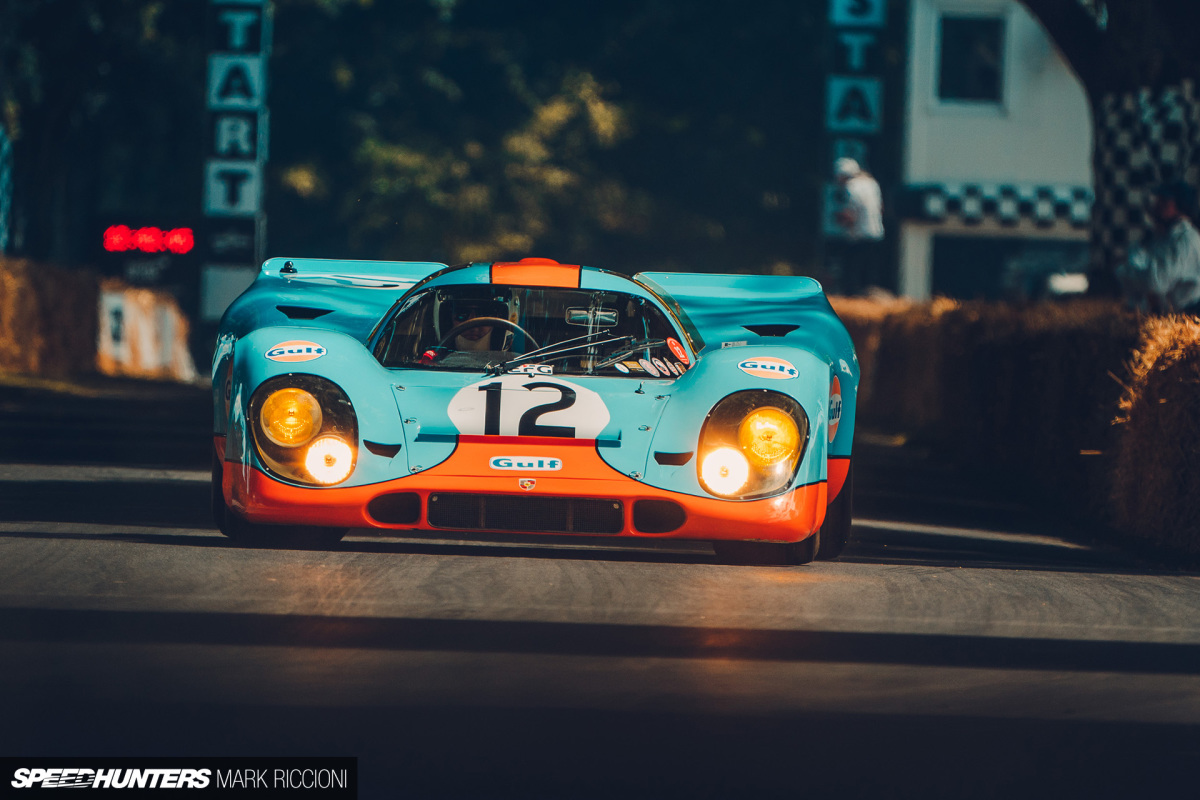
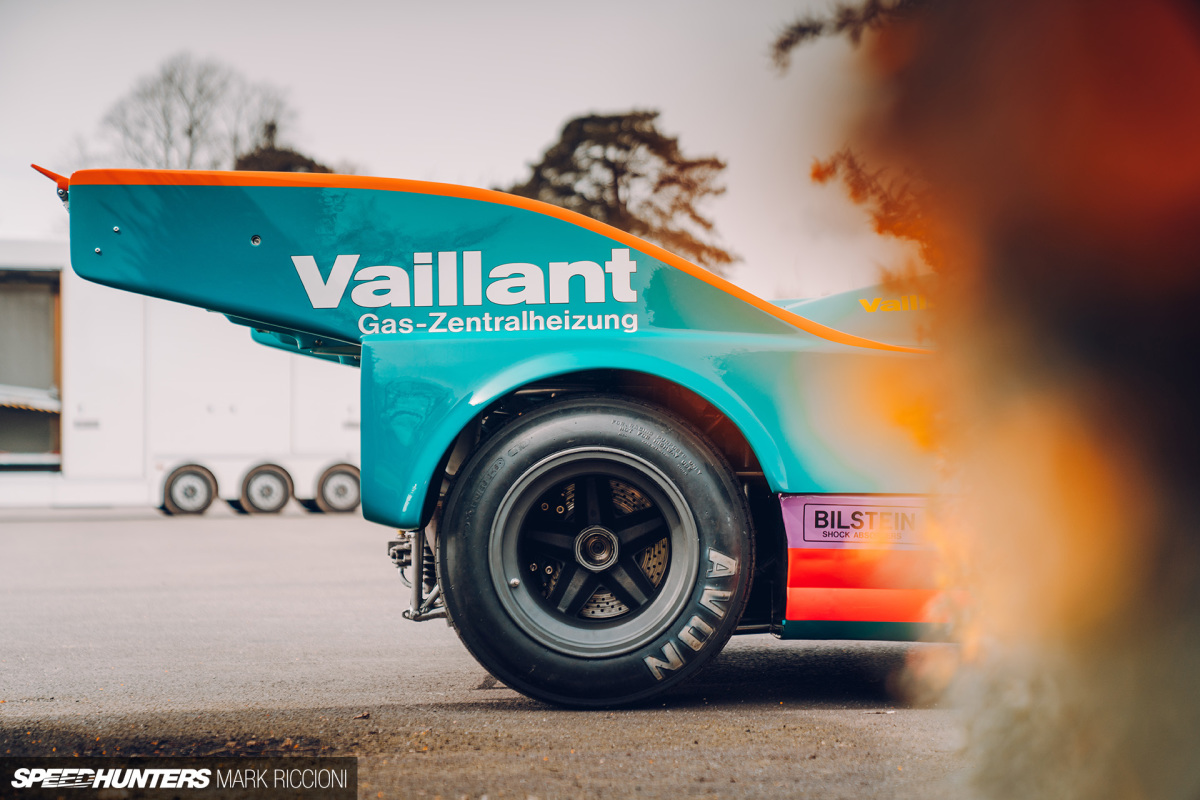
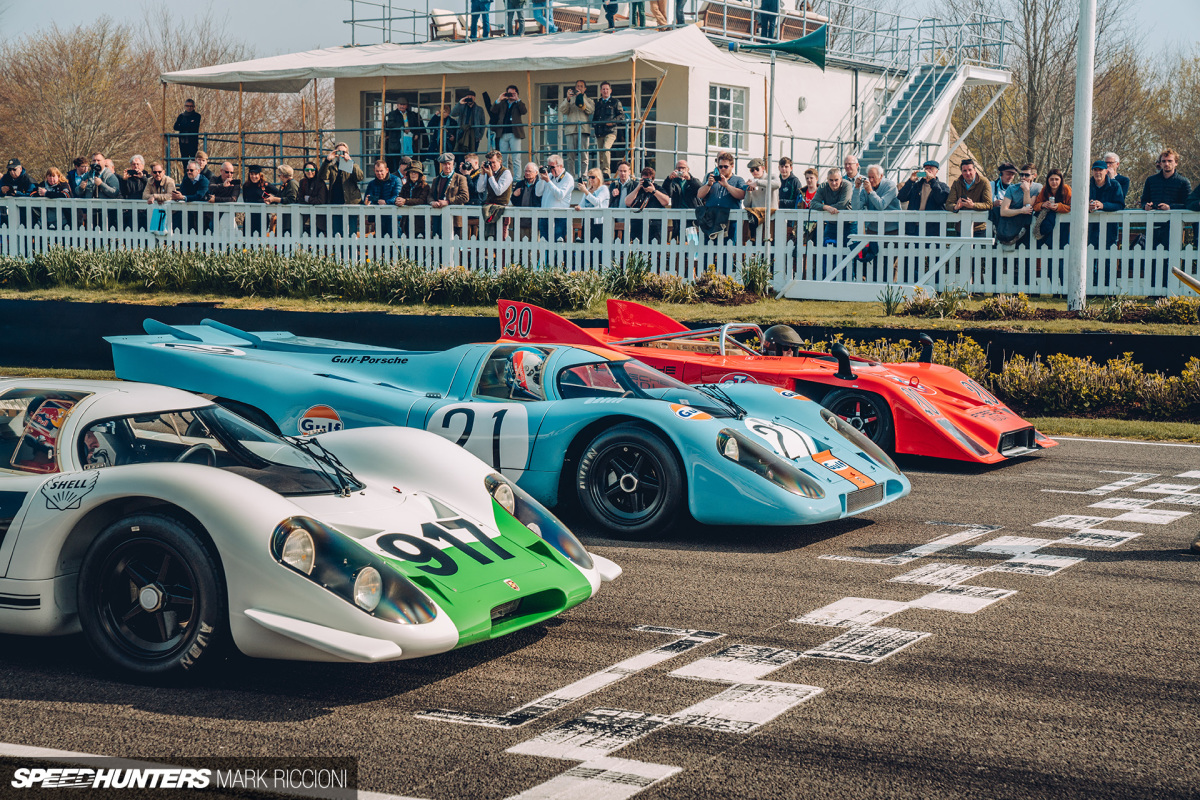
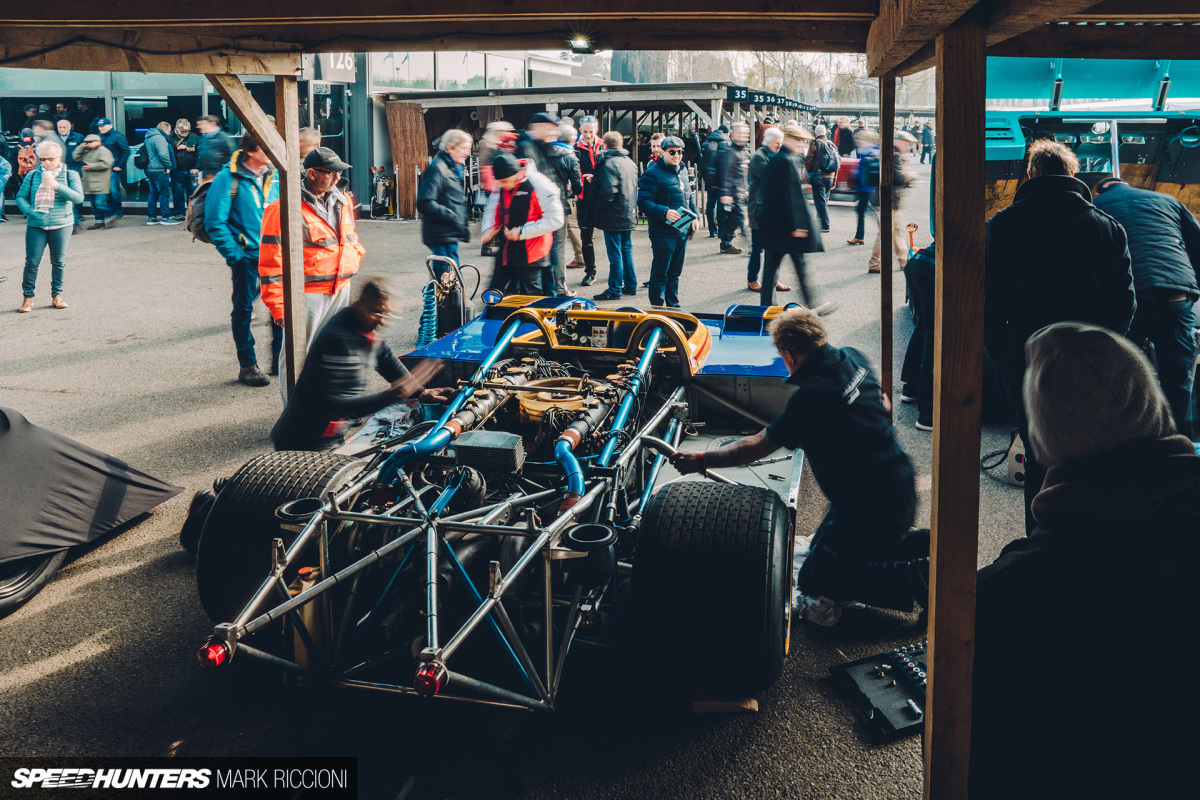
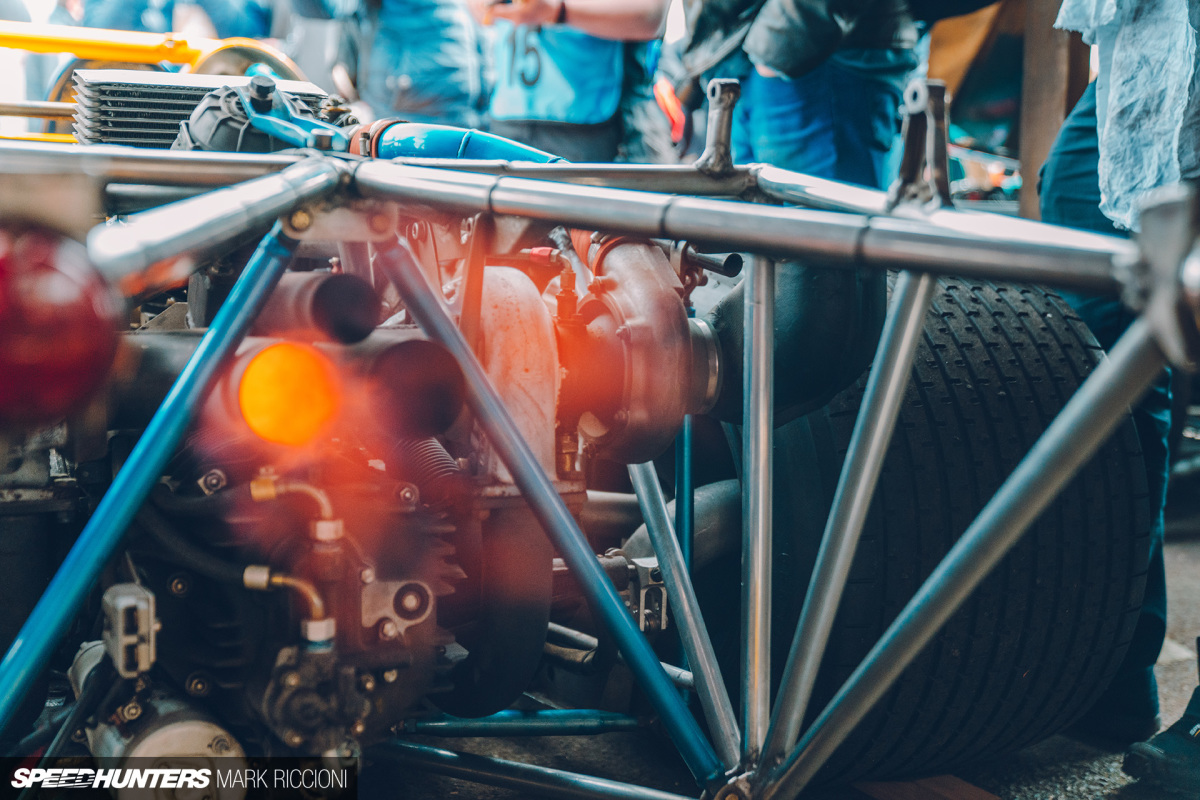
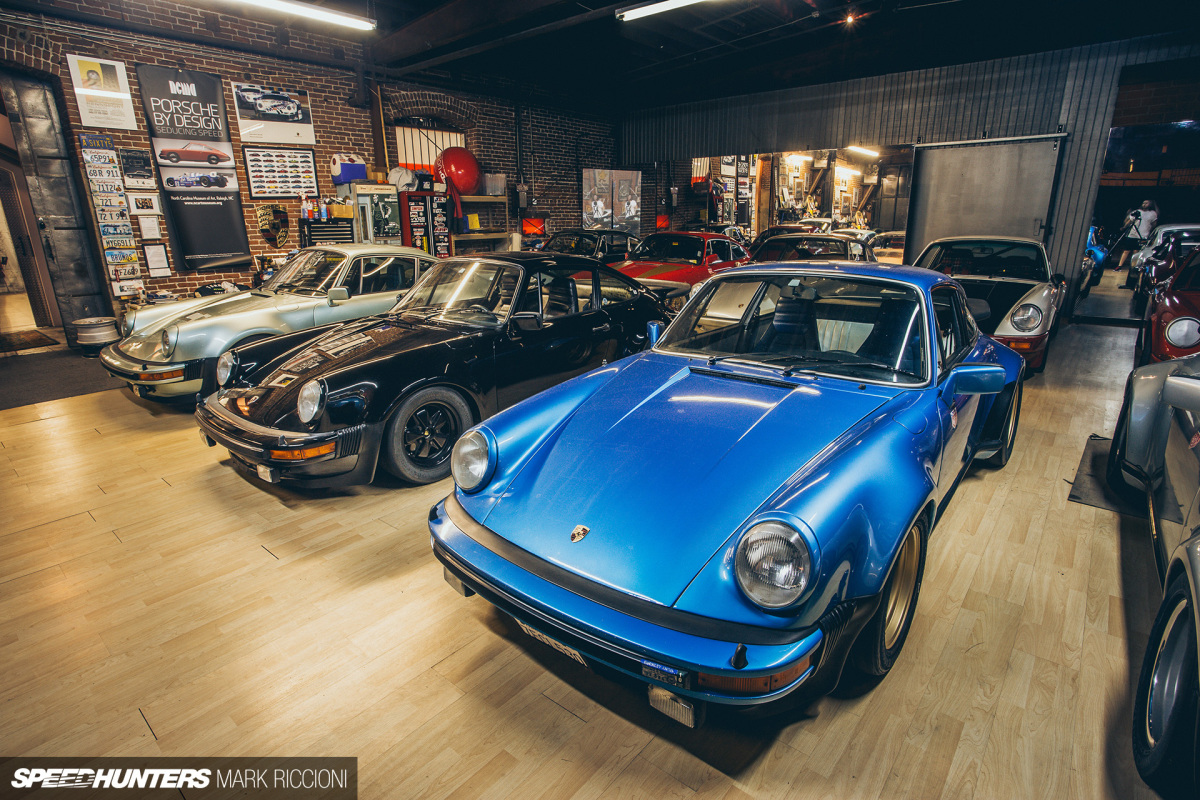

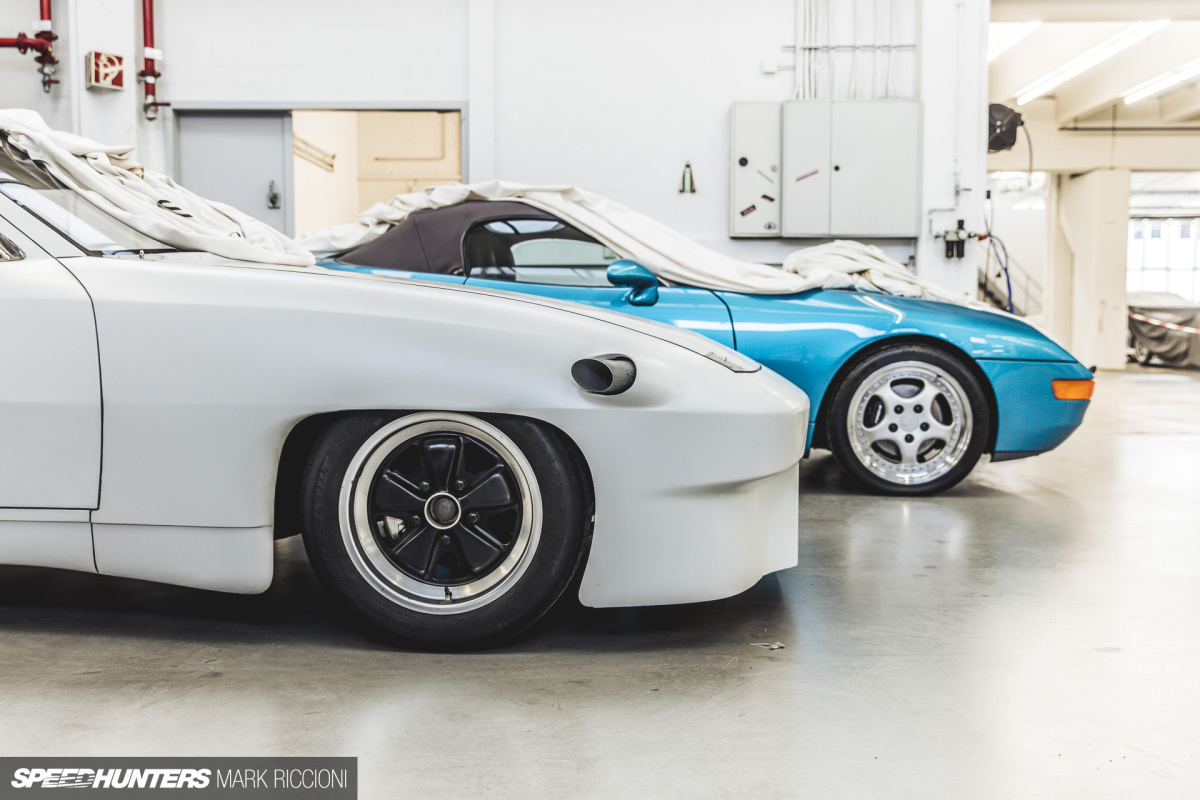

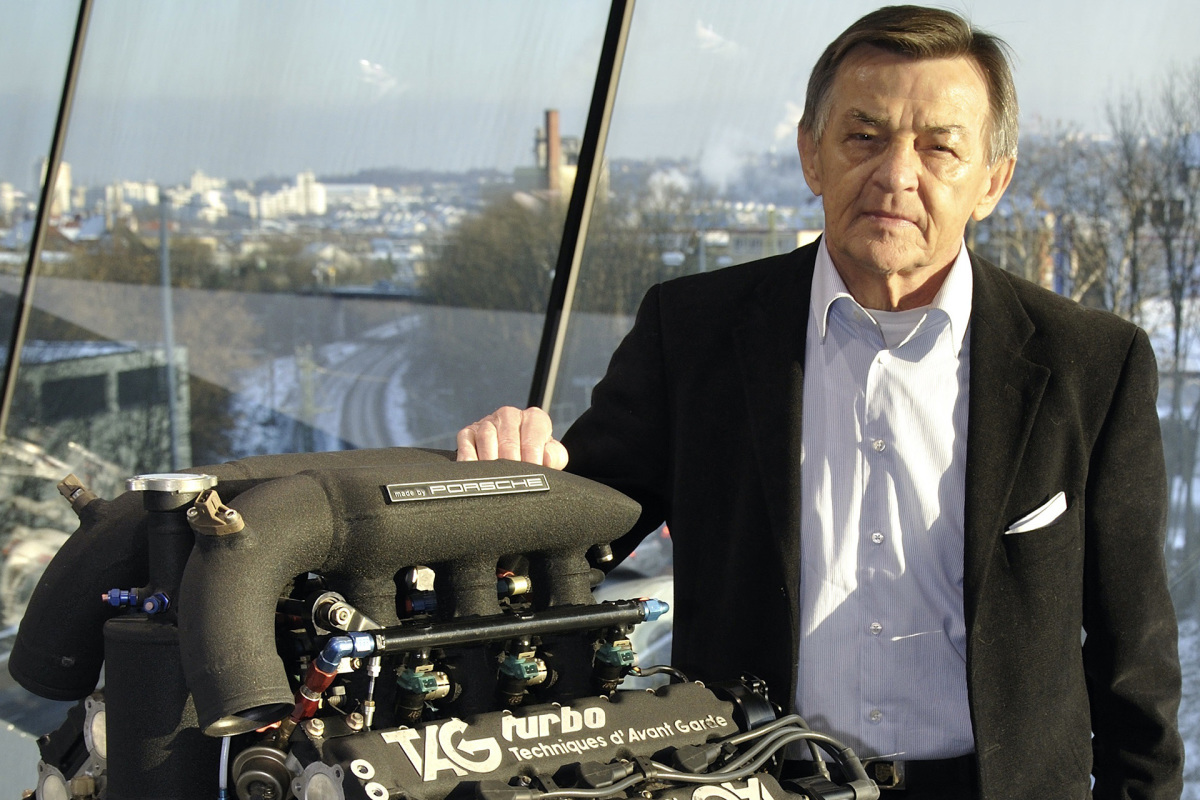
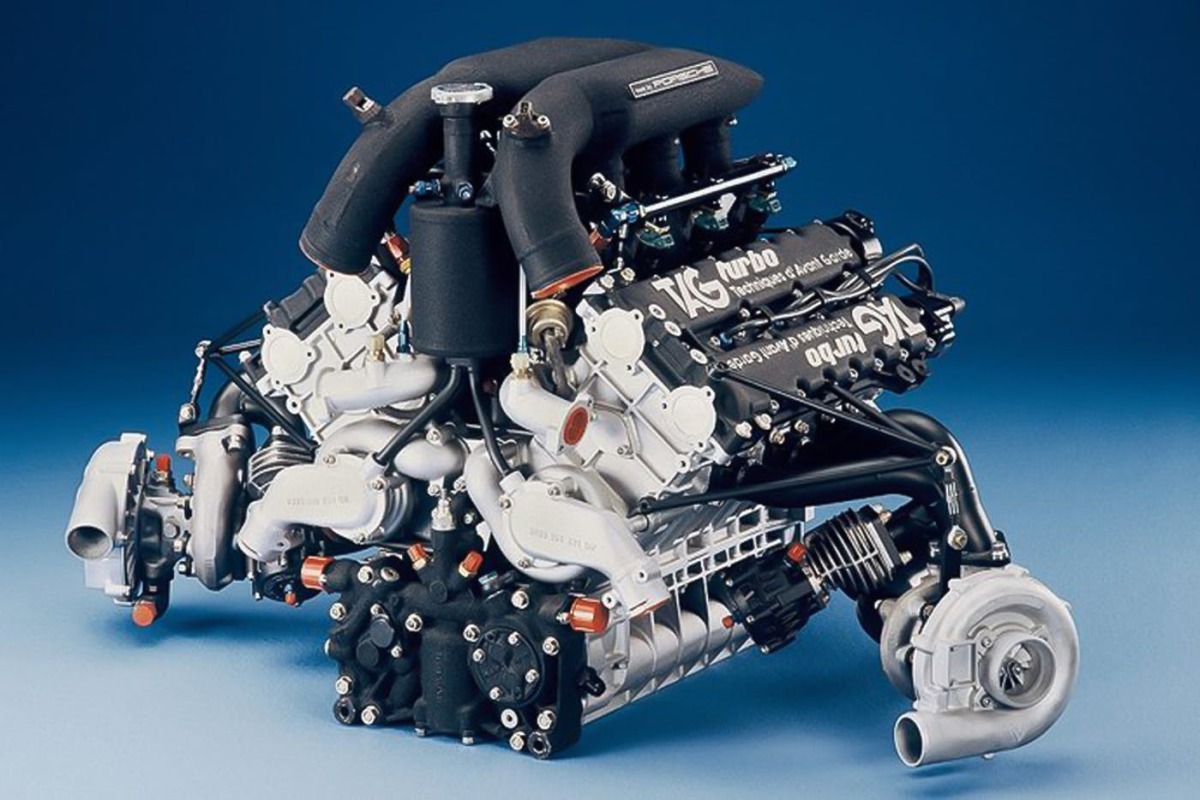
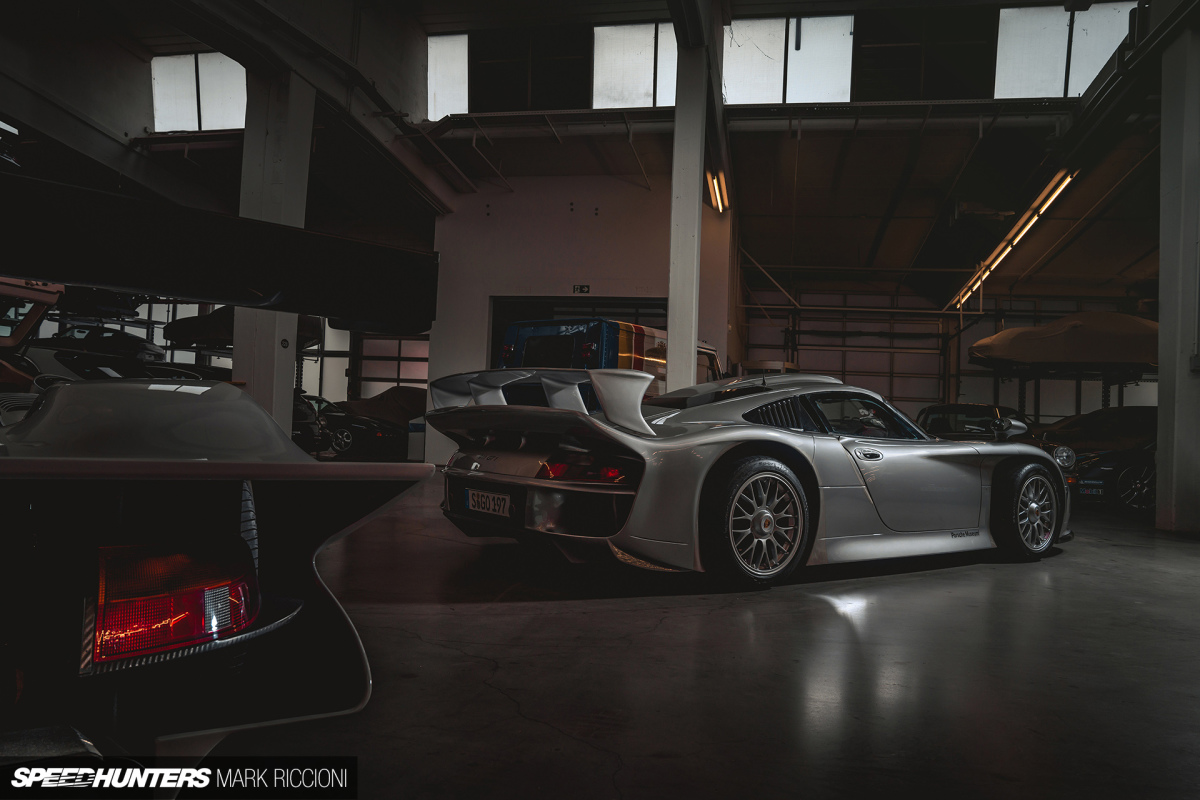
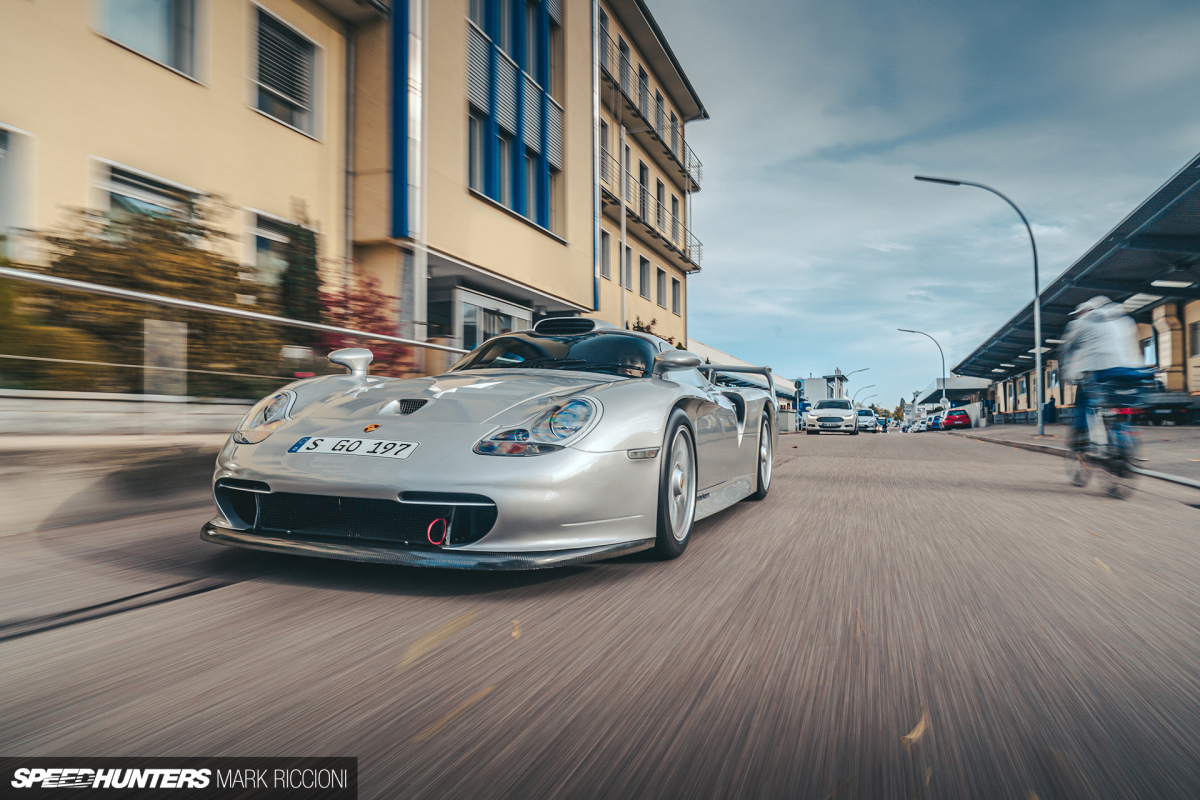
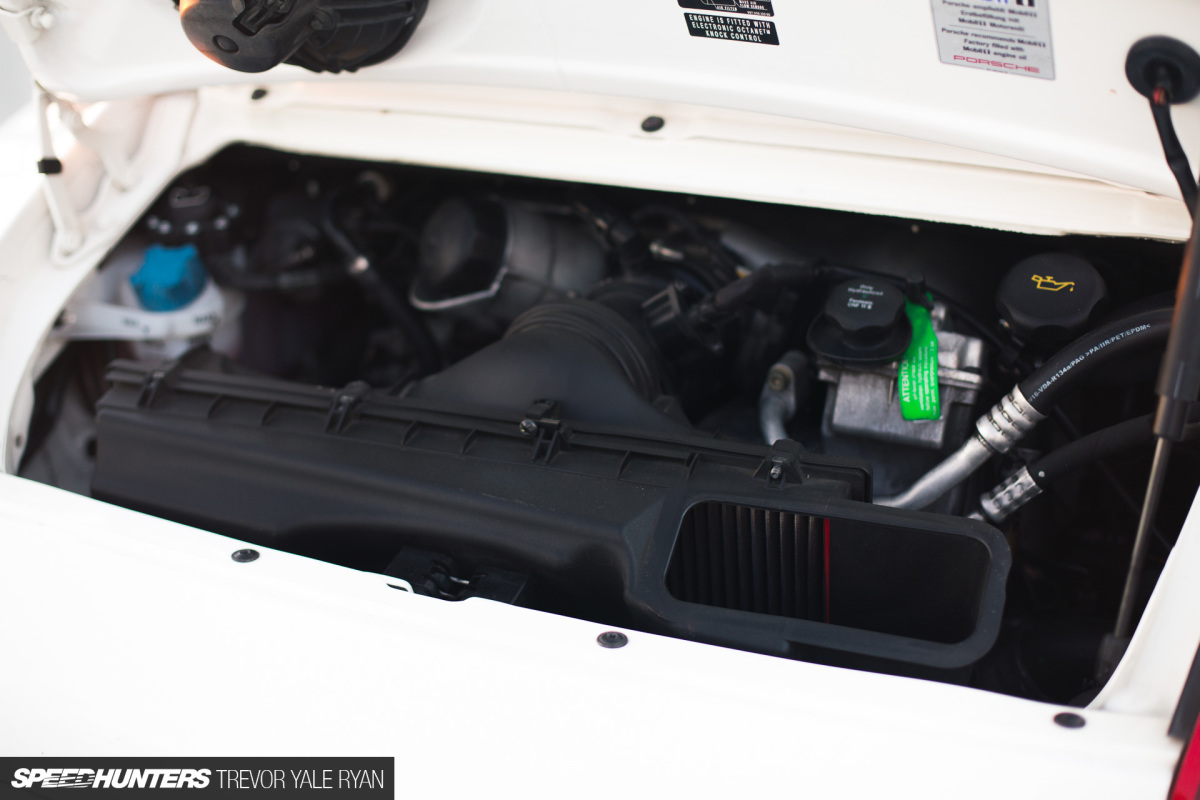

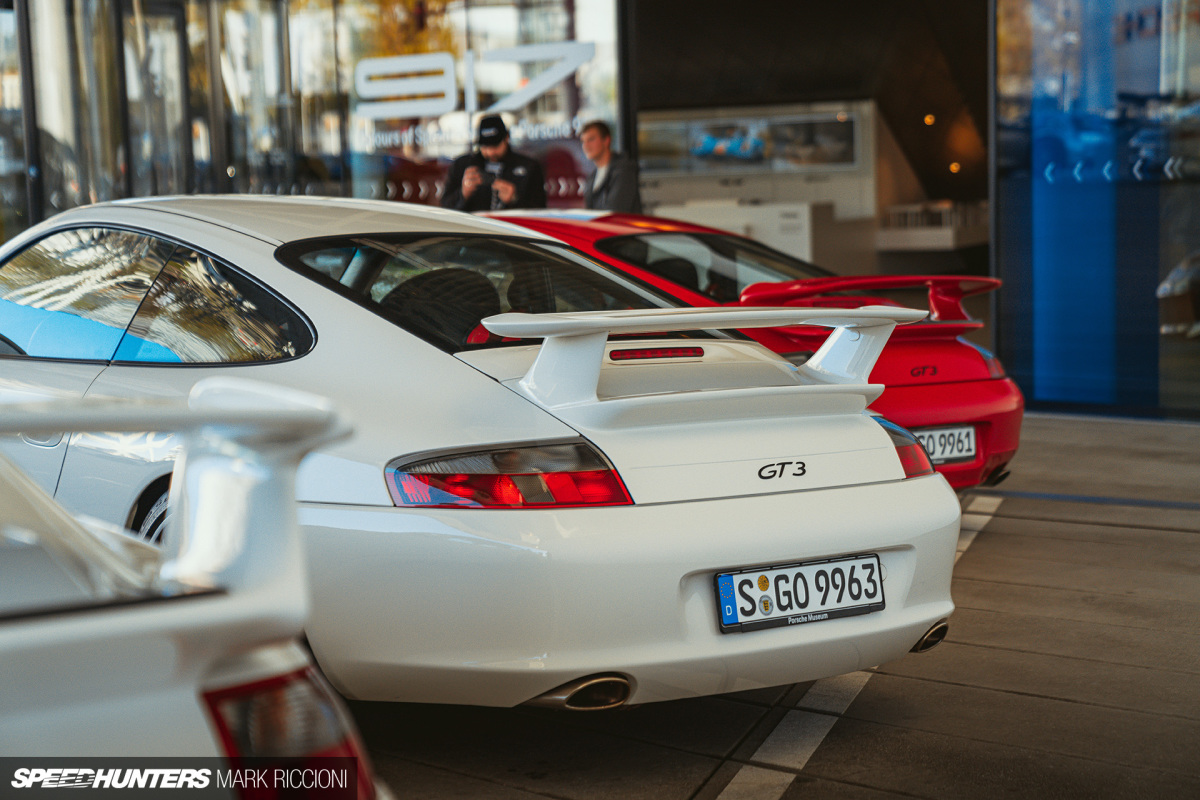



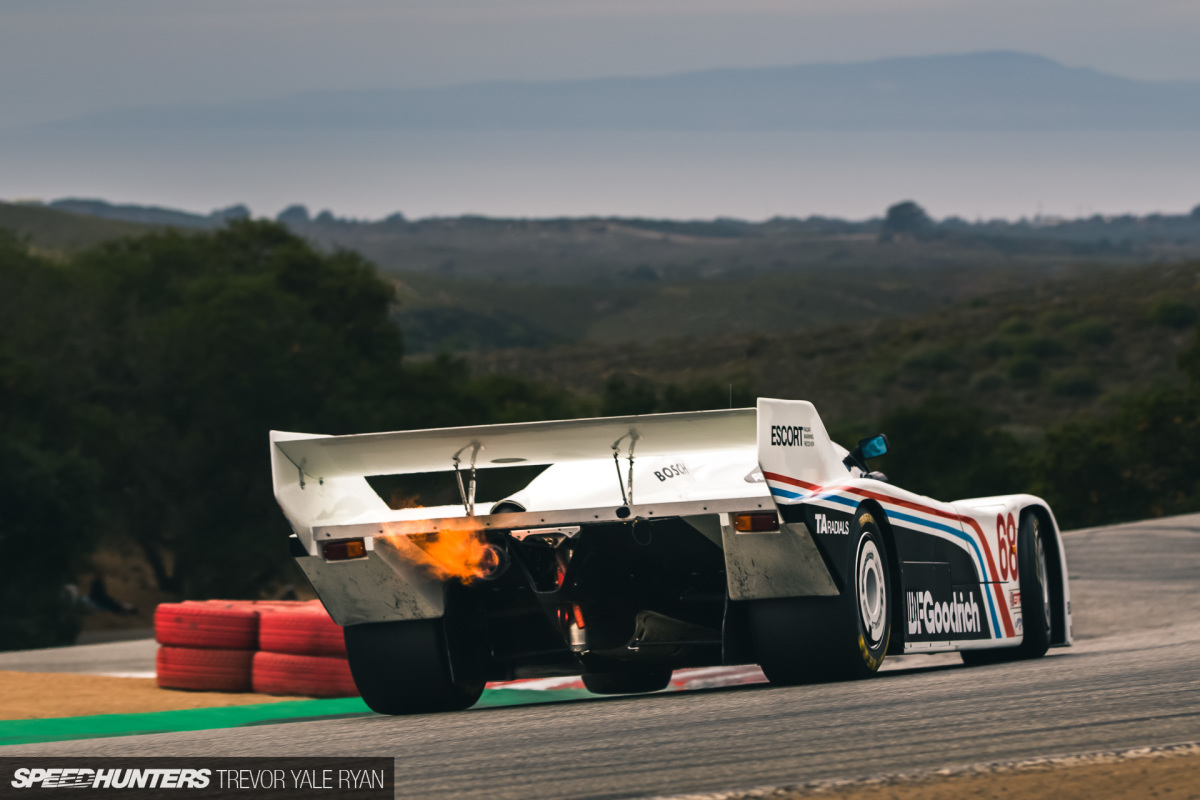
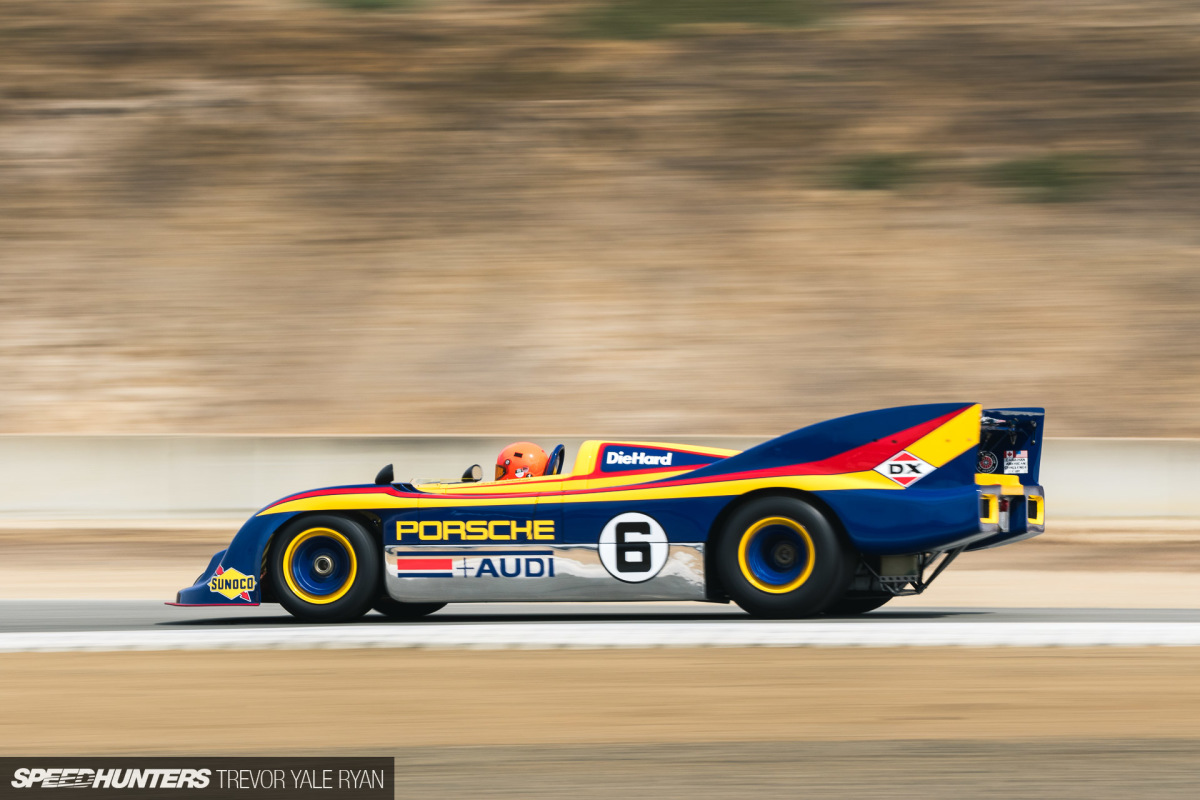
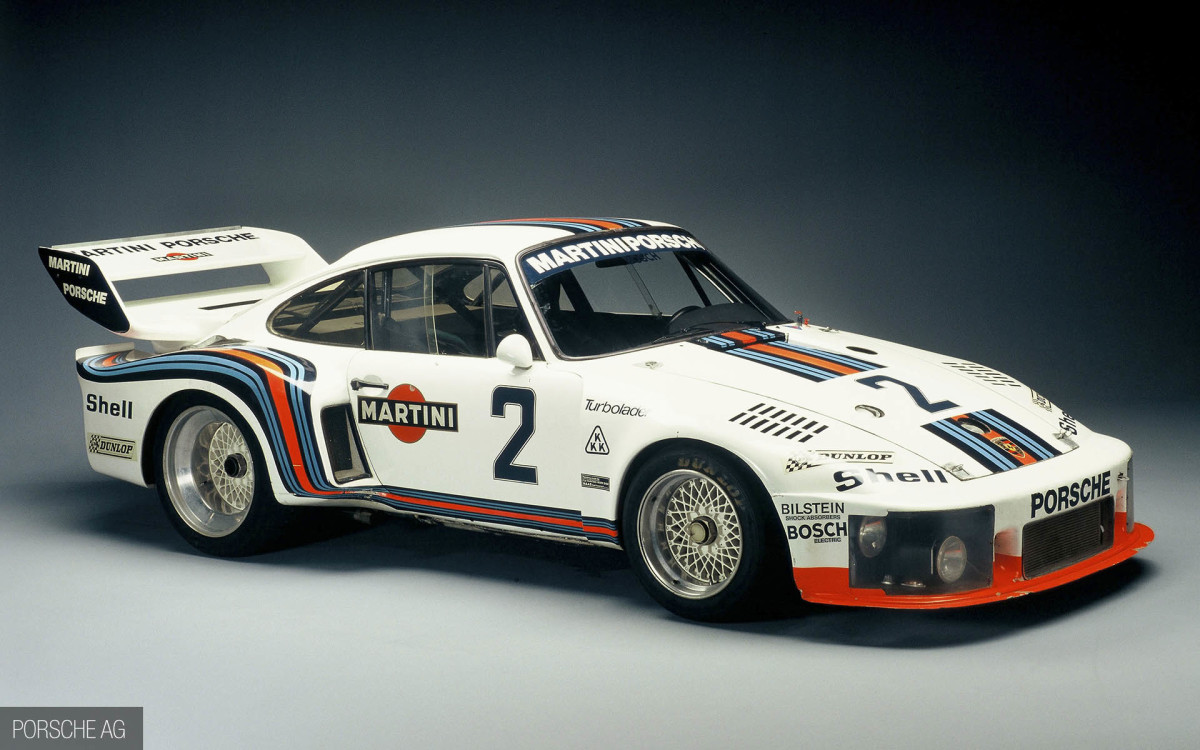
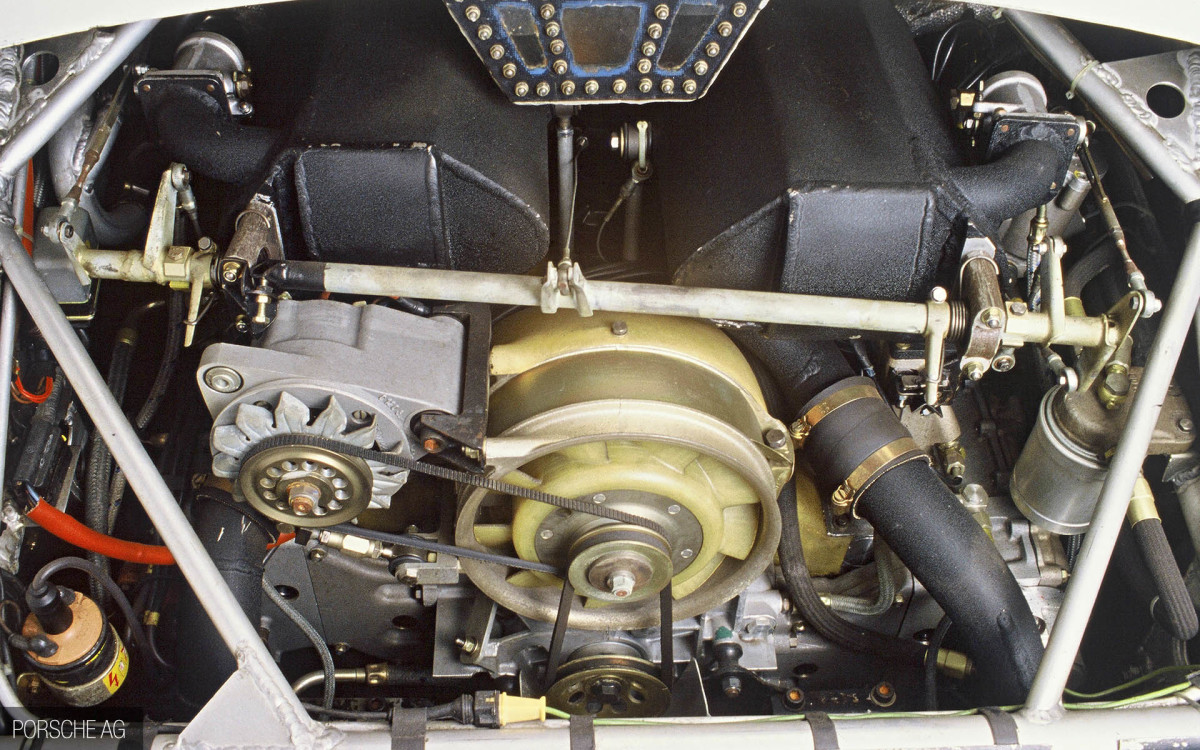





Will, wow! What an article! Absolutely "amazing" photos past and present! Completely blown away by all this! Porsche is the greatest marque(to me) in history! MB and Ferrari were also up there but Porsche is my marque of all time! Absolutely amazing photos! Pulitzer prize is yours!
Nice article on a very accomplished man.
Couple edits:
-Porsche won Le Mans outright in 1970 in a short tail, not a long tail 917.
-The 930 debuted in 1975.
-Lauda won 1 championship using a Porsche powered McLaren in 1984. Prost won 2 using a Porsche powered McLaren in 1985 and 1986.
Appreciate the heads-up & all updated. With regards to the 930, i think Will meant it was unveiled in 1974 and put on sale in 1975, but we've tweaked the copy to avoid any confusion.
Very good article, thank you. Even though Porsche is not my favorite marque in the world, I cannot deny that it was almost certainly the best in terms of racing, and now I know why. And anyway, the 917K is one of my favorite cars, so cheers to Hans Mezger!
Credit where credit is due.
I've met and talked to him a couple of times in my life. I was working those weekends in Germany and started a coversation in the hospitality lounge at the Hockenheimring. Didn't know who he was until he mentioned the name Mezger. Have had great conversation. Same happened at the nurburgring in 2007 and again at Hockenheim in 2008 and the nurburgring in 2009. Thats also the last time i've spoken to him.
Quite a stubborn man, but a honest man at that. I can still remember him saying: Quatsch!
Top stuff. Hell of a eulogy.
Will,
You misspelled Niki Lauda's last name. Still an awesome article.
Also misspelled Mark Donohue's name.
Hans Mezger will be forever remembered for his work with Porsche and because of him to this day Porsche still makes some of the best cars out there
May he rest in peace
This is indeed an amazing tribute to a legend and an awesome article
Hans Mezger will be forever remembered
wow this is very well together , thanks alot mark for the read !!! wow !!! i'm out of words , i'm going to read this again soon , this one for the save pages
Brilliant tribute, Will. Thanks for sharing.
This article is legend. Archived.
So you seriously called him "Niki Lauder".
What an unbelievable set of photographs